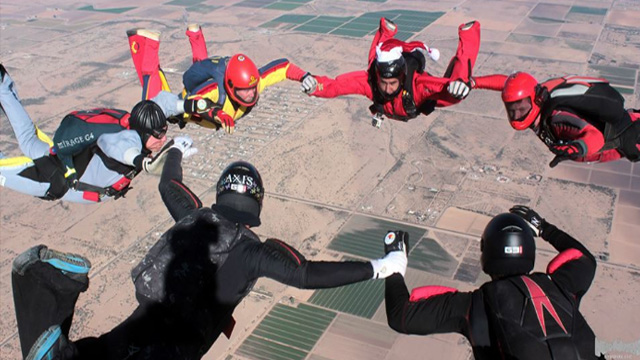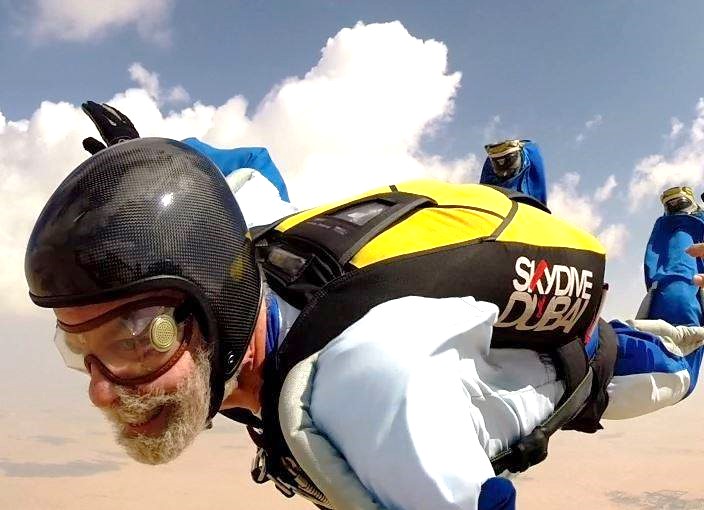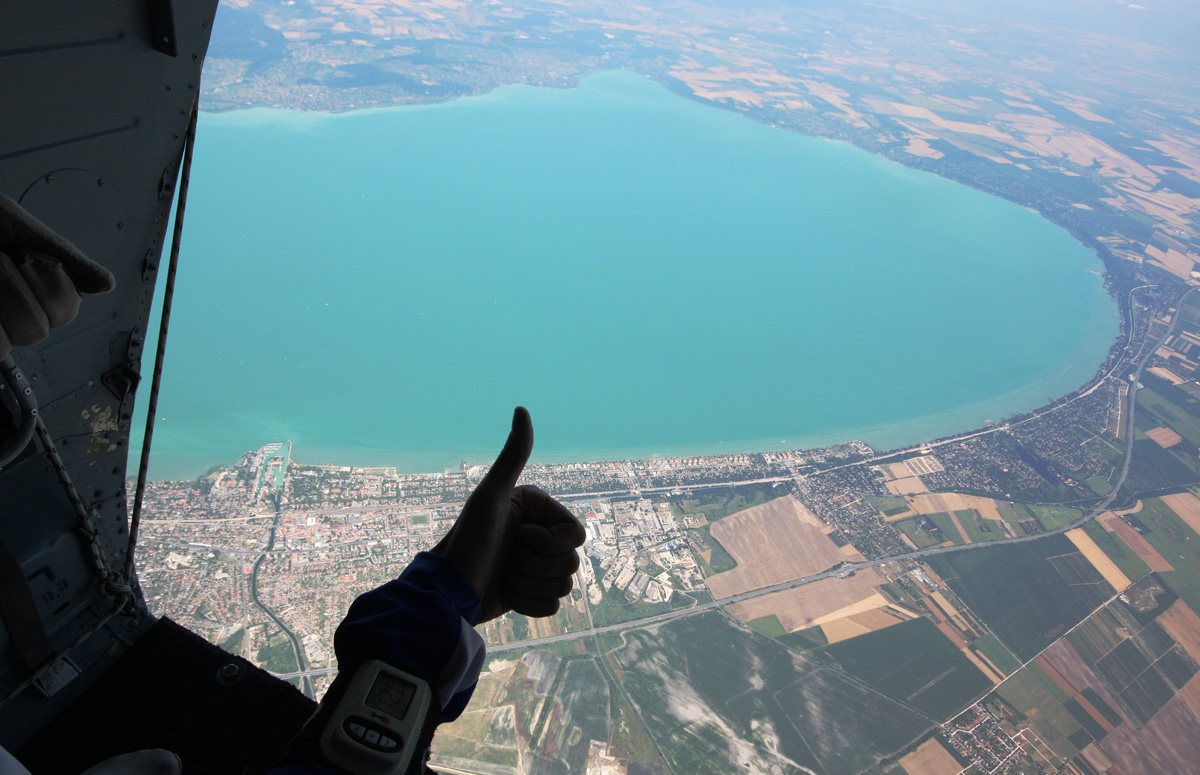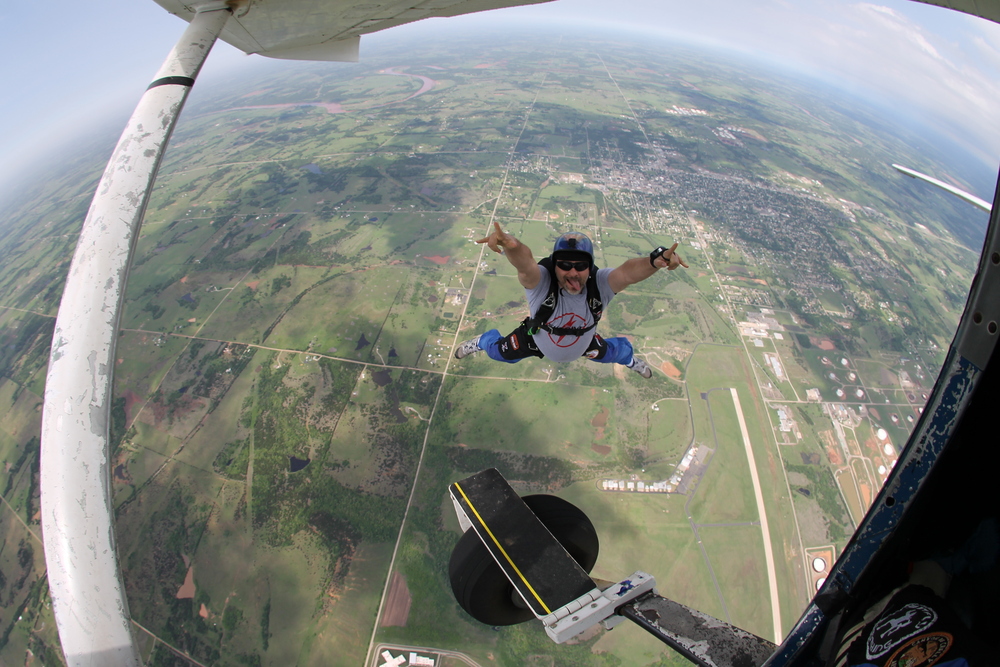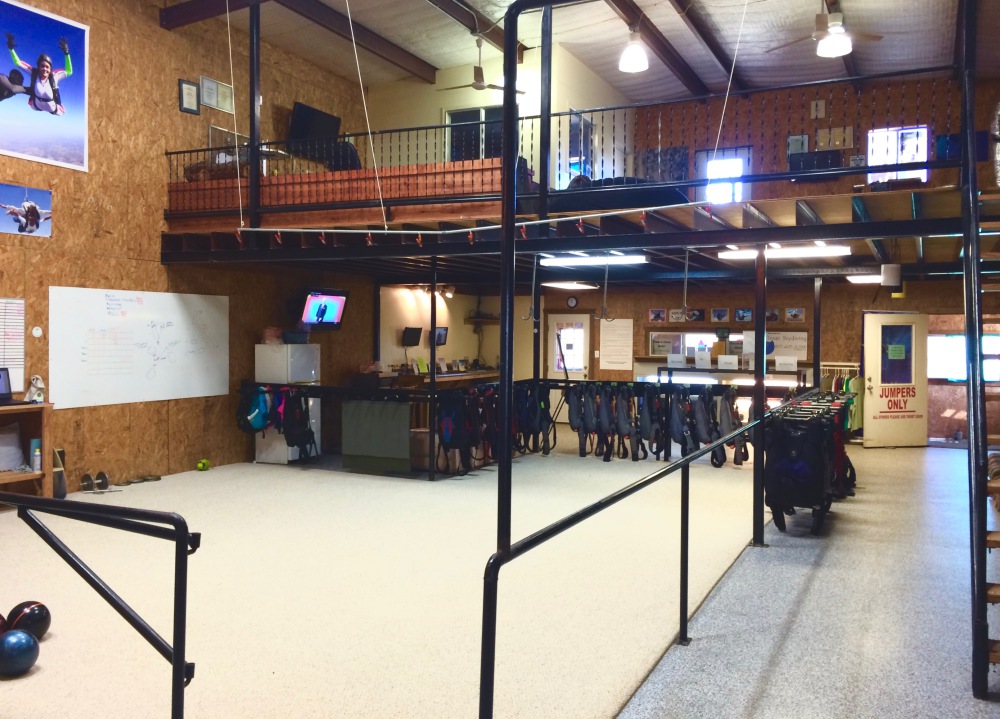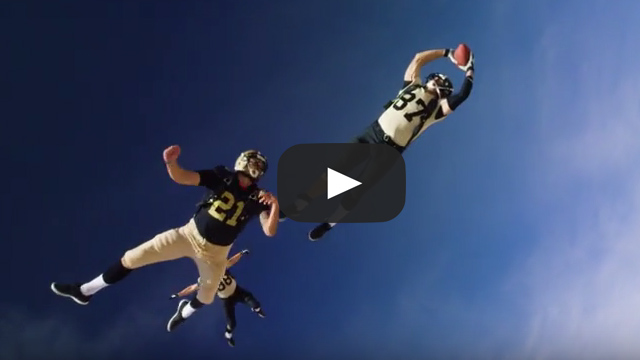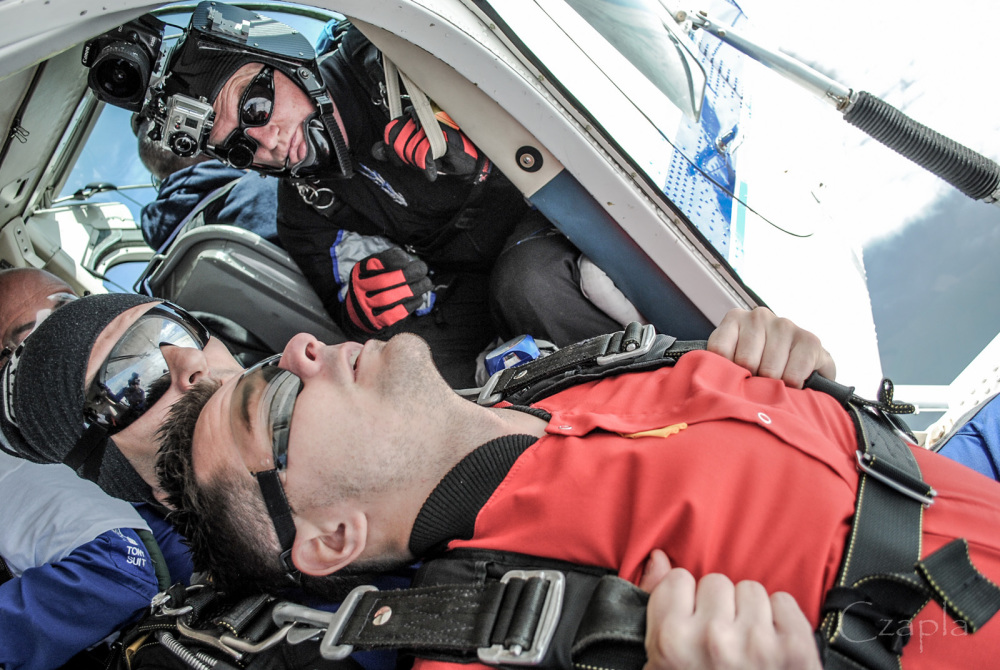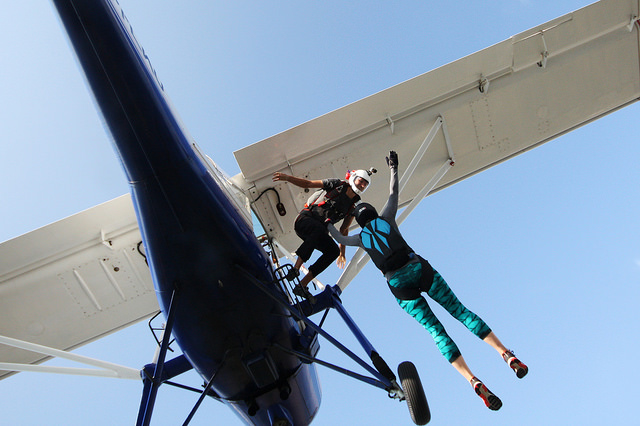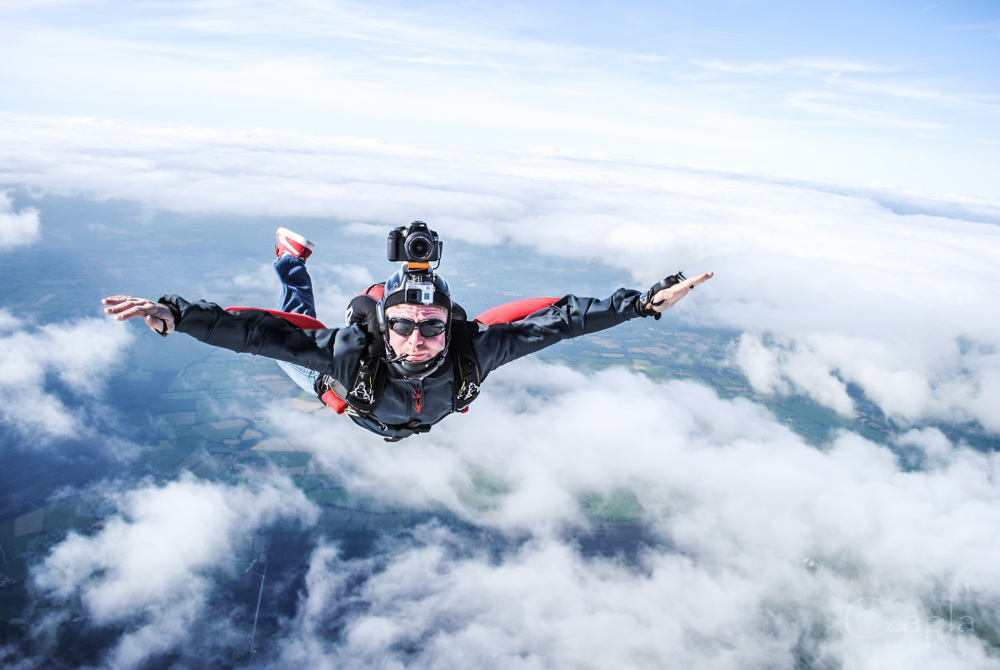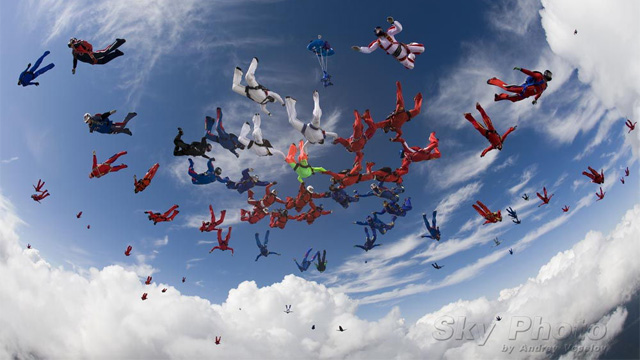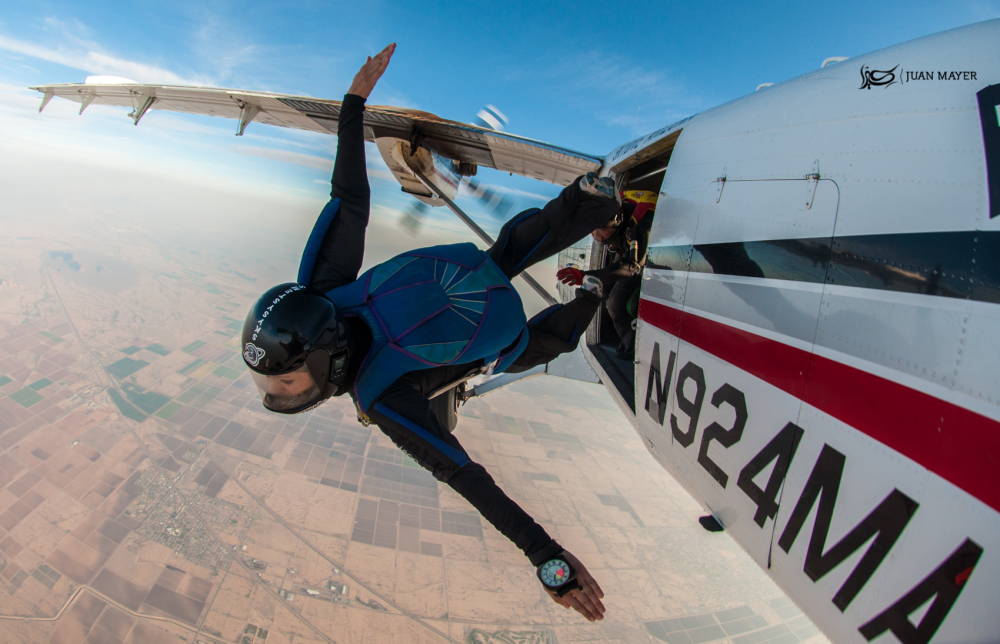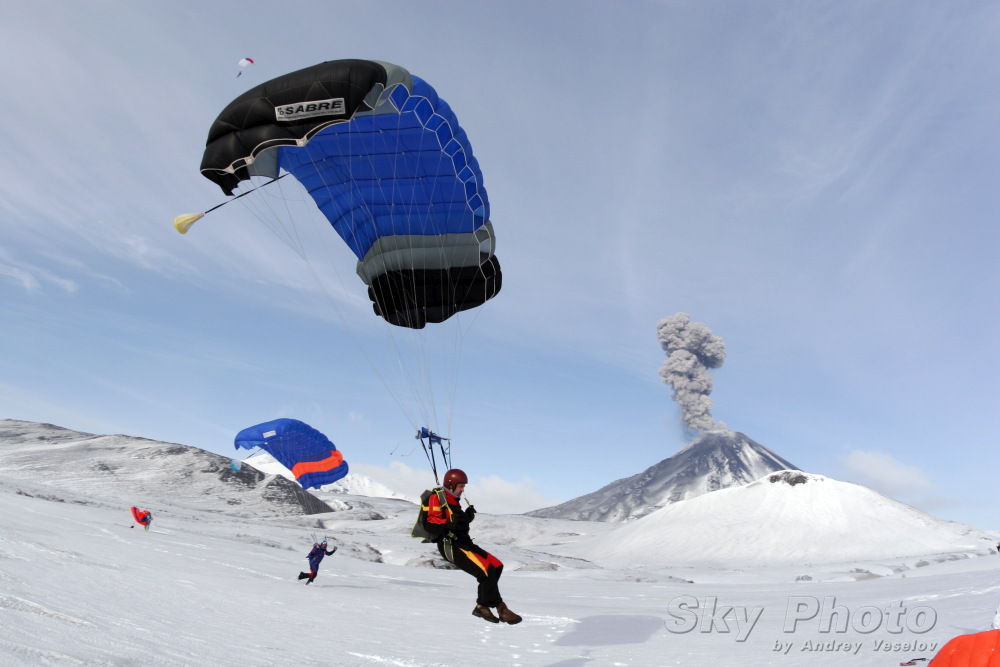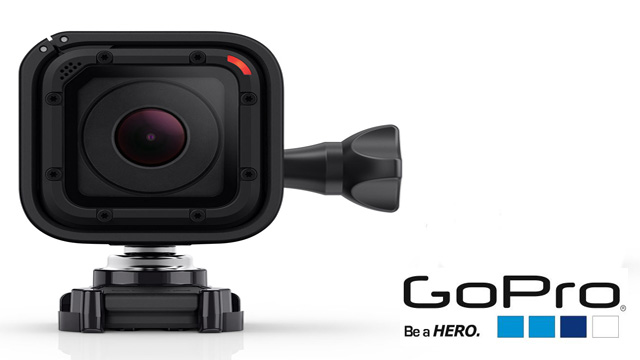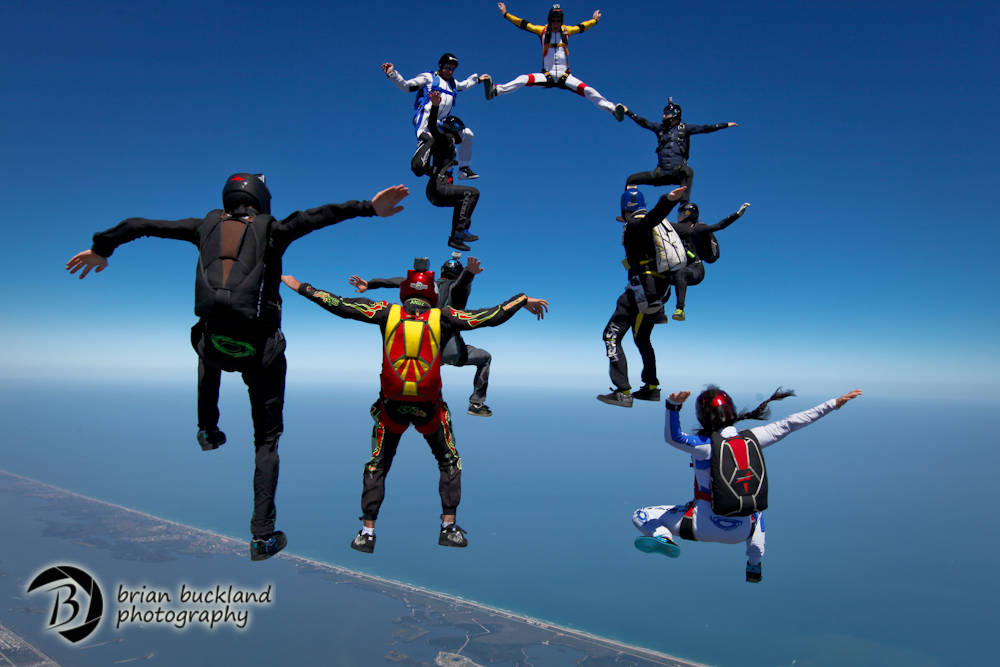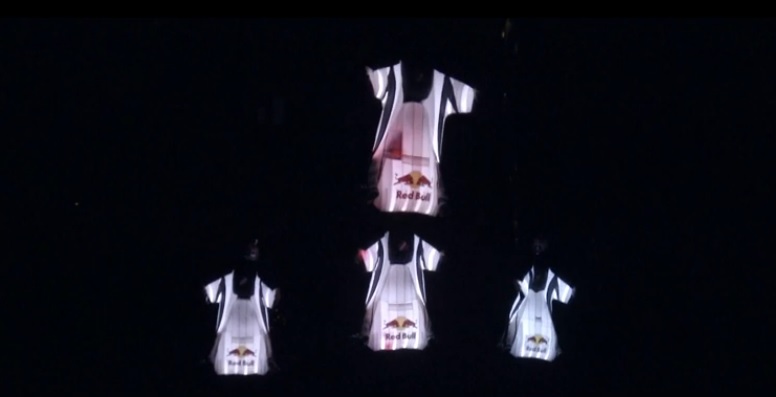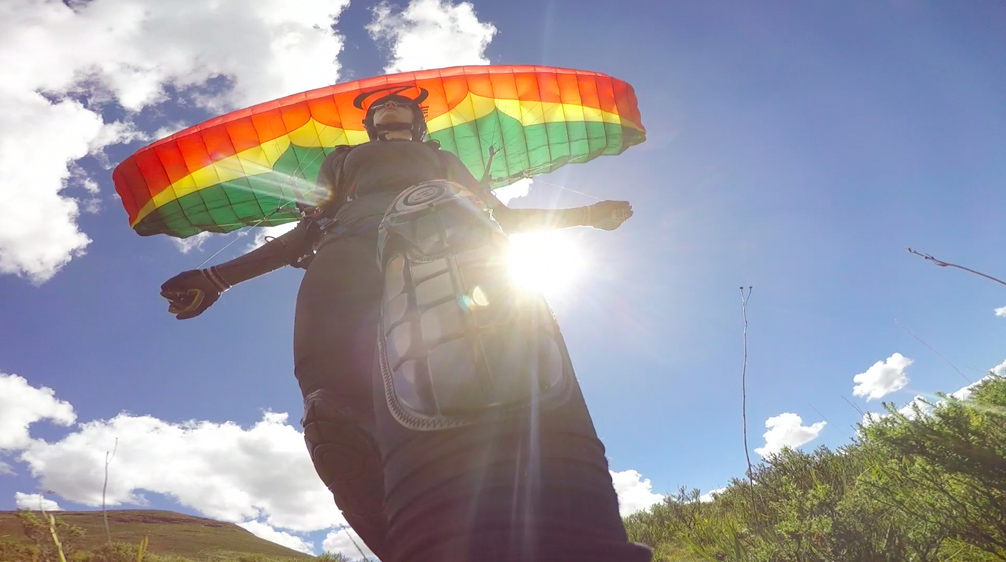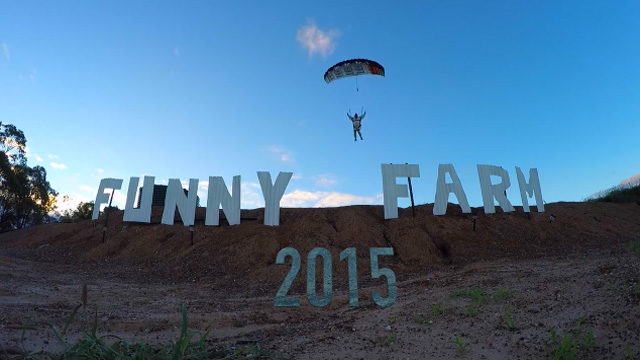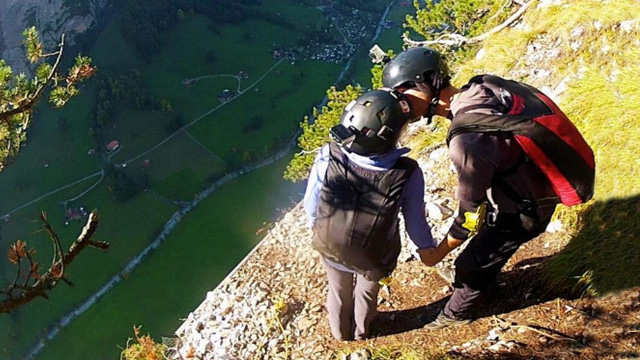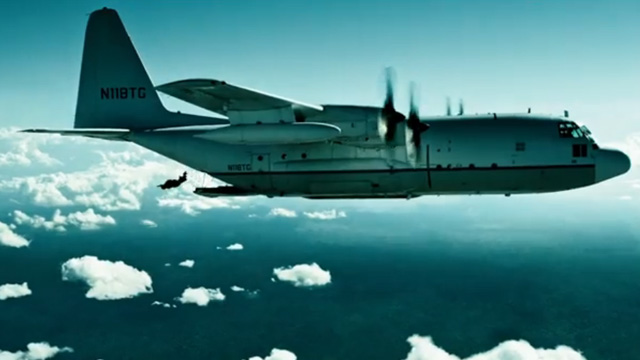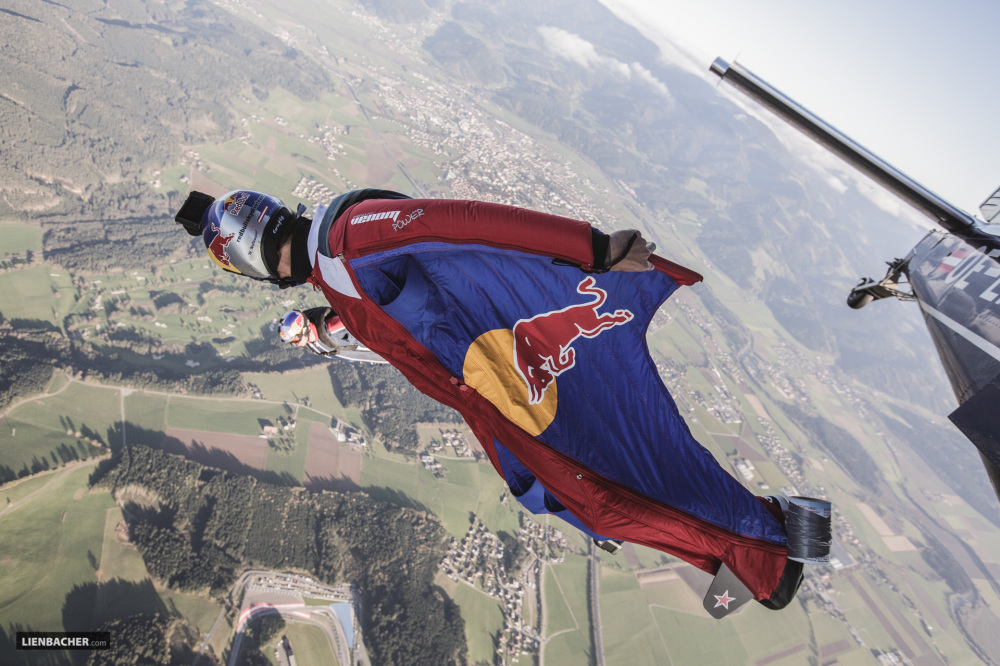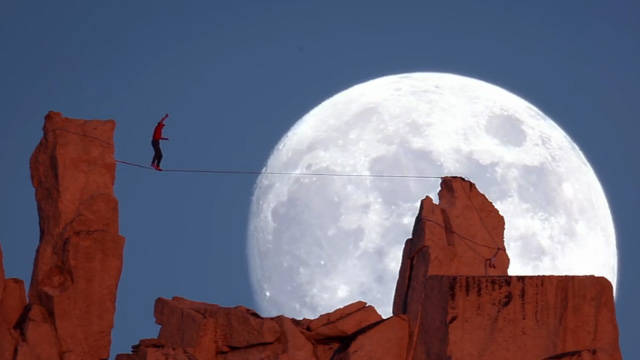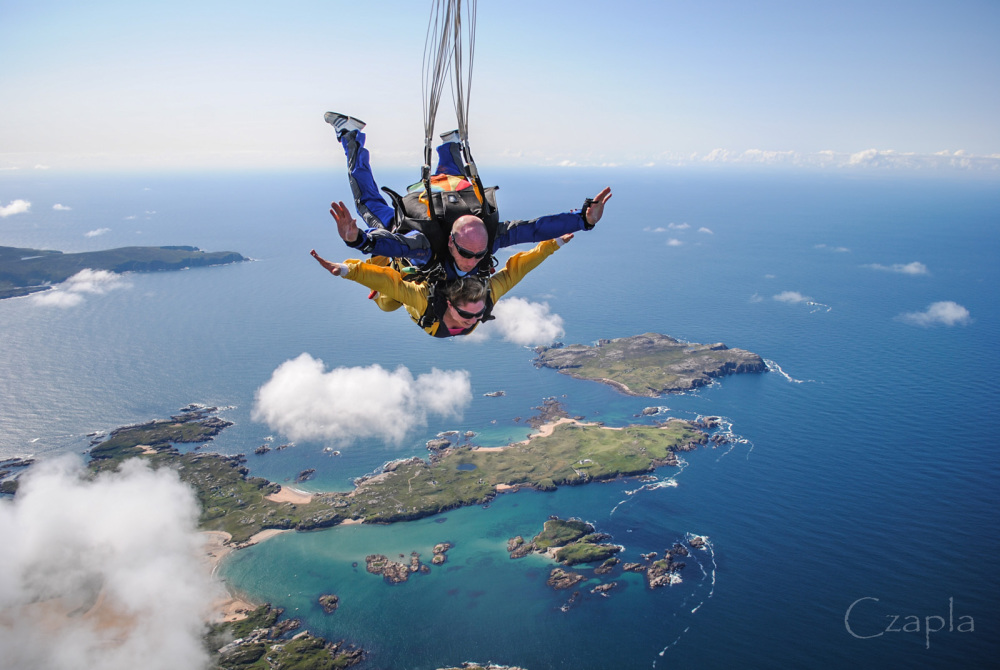Search the Community
Showing results for tags 'general'.
Found 265 results
-
7 Expert Tips For New Skydivers to Get the Most Out of Load Organizers Remi Aguila organizing a festive Christmas-boogie jump at Skydive Arizona Photo by Alex Swindle The portrait wall next to manifest is confusing for a brand-new skydiver. Who are all those people, anyway, with the smiling faces and the discipline names printed in all-caps underneath them? What’s an “Organizer,” really? If you don’t know the etiquette, it can be a little daunting to get on those loads without fear of a forehead-slapping faux pas. New skydivers, make no mistake: you are invited. Remi Aguila has been organizing belly jumps at one of the biggest, busiest dropzones in the US – Skydive Arizona – since around 2008. Since then, he has organized thousands of skydives for jumpers of all levels, nationalities, aptitudes and proclivities. You can be certain he’s seen your kind before. Here’s what he says you need to know to have a successful experience in the organized sky. 1. Don’t be shy.“Newbies have this tendency to find me in the bar after the day is over and say that they wanted to get on a jump but that they didn’t want to intrude; didn’t want to ‘ruin the skydive.’ That’s missing the point entirely, guys. If there are organizers on your drop zone, go talk to them. Maybe the jumps they’ve currently got going aren’t a great match for your skill level, but a good organizer will find a way to get you in. Most organizers will be happy to split groups into smaller factions that fit more of the jumpers’ goals. They’ll be happy to design a jump for people with less experience – but you have to ask.” 2. Know who you’re talking to.“An organizer is not the same thing as a coach. An organizer’s job is really to get people jumping, and to make sure that people who want to jump with other people can find somebody to jump with. Organizers exist because, even though there’s a lot of casual organizing that goes on between jumpers, most people like – to a certain degree – to be told what to do. An official organizer can facilitate that without being too authoritarian, but still the presence of an organizer on a jump puts a nice bit of structure into the mix. A dropzone representative usually hires the organizers at any given DZ. Basically, that hiring manager looks for people that hold a coach rating, that demonstrate skill in their chosen discipline, that have a friendly attitude and that show a solid record of experience in smaller formations. (Most organizers end up doing between two- and eight-way jumps.) Don’t get tripped up by the specter of compensation, either. I have never been on a drop zone where somebody who was called an organizer was expected to be paid by the jumpers. There may be some out there; I don’t know. However, I have been jumping for 25 years, and I have never come across a dropzone where somebody who was called a load organizer was expected to be paid directly by the jumpers. At boogies, you generally pay an extra fee to cover the load organizers in general, but you won’t be paying for slots or paying organizers as you would a coach.” 3. Communicate clearly.“You need to start the conversation; the organizer probably won’t approach you first. When you do, introduce yourself confidently. Tell the organizer your skill level and your experience. Tell them what you want to learn. I don’t personally know a single organizer that’s going to turn a newbie away out-of-hand. They may, however, tell them that – at the moment, at least – there are too many people on a given jump, or that the jump sits outside of their current abilities, and it wouldn’t be appropriate for them. That said: if you’ve made it clear that you’re new and you’re looking for a jump you can join, then you’ll be on their radar.” 4. Get the timing right.“Where I jump – at Skydive Arizona, in Eloy – showing up on a weekday is your best bet if you’re fresh off student status. It’s a lot less busy, and organizers will more often have the time to do one-on-ones or two-on-ones with new jumpers. You may even get lucky and score some free one-on-one, non-structured coaching from them, whether that’s belly or freefly. Personally, I think that’s a great way to get some foundational experience. For instance: If it is a very quiet day and somebody approaches me, I’ll certainly ask what their experience level is, but it’s not going to be a deciding factor as to whether or not I’ll jump with them. If we’re doing one-, two- or three-ways, it doesn’t really matter what the experience level of the person is. They’re going to get on the jump, and they can expect much more feedback than they’d receive on a busier day.” 5. Be honest.“As an organizer, it’s important for me to get a realistic idea of a jumper’s skill level and general awareness level. When you tell me how many jumps you have, I need you be honest about it. If you have 20 jumps, say you have 20 jumps. There’s no point in misrepresenting yourself. If you have 20 jumps and 3 hours in the tunnel, be clear about that. Jump numbers are no longer the absolute measure they used to be, with the introduction of tunnels. However, somebody with 20 skydives is going to have a different skill and awareness level than someone with 200.” 6. Be open.“If you’re a brand-new skydiver, there’s a good chance that you don’t know what you want to do on the jump. A good organizer will have a few basic jumps that are two-ways and three-ways that are ready-made for people that don’t have a lot of experience. These tend to be kind of coachish and workshop basic skills. That’s what really you should be doing at this point. For these jumps, we tend to focus on basic turns, slides and levels. The aim is to keep it fun, but also to add factors that build on the basic freefall skills: like procedures for exiting the plane and for separation. Some people expect a full-on coach experience, and other people just expect a smile and a high-five. I advise shooting for the middle of that scale.” 7. Ask for feedback.“Immediately after the jump, approach your organizer for a quick debrief. This is key to your development as a skydiver. Make it specific: ‘What do you think I should improve? What do you think went well? What do you think didn’t go well?’ This debrief may not involve video; it may just involve some basic feedback on how the exit went, what aspects you can work to improve and general notes on the jump flow. On busier days and on bigger jumps, it’s going to be a little more challenging for your organizer, because he or she might have 20 people that want notes. When that’s the case, it’s incredibly hard to give individual feedback because of the number of people we’re looking out for. Always ask. The worst an organizer could say (and I would be very surprised if they did) is that they’re sorry; that they have to run to another load. In that rare case, just brush it off and try again next time. We’re here to facilitate your experience, after all – and to help you have the most fun you can have in the sky.”
-
After almost a 25-year hiatus, I came back into the fold, enabled by the last child having gone off to college, and prompted by arthritic hips that were making it too painful to play tennis. I figured some things may have changed, but that I had been aware of them, having kept up my USPA membership and subscription to Parachutist. Well, it’s one thing to be aware of something, and quite another to learn to handle it in real time. In my first year back, I jumped at 5 different dropzones in three countries, so that I saw how the changes have been implemented in some different environments. Here is a list of the things that had changed that awaited my return, and had implications for my safety and the safety of others. 1. There are seatbelts in these jumpships—a good idea in the event of an unanticipated landing, but one has to learn where they are, remember to take them off, to stow them (especially in small aircraft), and be aware of where they are to avoid entanglement on exit. 2. Spotting is a thing of the past in many dropzones—just keep your eye on the colored lights! Still, it is a good idea to check where one is, in the event a pilot was tracking the wrong line. 3. Turbine aircraft now have doors! No more freezing on the way to altitude, or clinging to one’s neighbor to avoid falling out. However, one has to learn when they go up and down, how to secure them, how to close them gently. 4. Everyone wears their pilot chute above their butt—making deployment a little slower, if one manages to find it (remember the advert in the Parachutist: “Looking for something?”), but avoiding a few other problems. Be sure to practice deployment with the gear you will be using many times on the ground, in a prone position, to develop some muscle memory before going up. And check it constantly—my too-loose BOC pouch let out my pilot chute when I rose from the floor and caught it on something, much to the consternation of the planeload of jumpers whose lives I had just endangered. 5. Parachutes come in many flavors, and many sizes—gone are the days of one canopy fits all. Most of today’s canopies are very touchy, and downright skittish, react to the slightest input, and take far more concentration in the last few hundred feet of descent. Everybody swoops, to some degree, and some DZs have abandoned upkeep of their pea gravel because nobody uses it. I found it easier to land an original Sabre 170 than a Sabre II 190, and I am sure I will not be going for a fully elliptical canopy—at my age, I have to avoid the 1-in-500 jump mishaps that can maim one for life. Essentially, skydivers have invented a whole new way to die—turn low, and drive into the ground at 60mph. 6. There are many minor innovations in skydiving gear, too many to mention—just make sure you know how everything works on your rig, and why it is the way it is. 7. Everybody PRO-packs, or uses some variant—although I had had several people show me how to do it, and watched all the videos, etc., in my first dozen attempts, I packed one malfunction, and had to get more private instruction in a quiet place. 8. People fly landing patterns—e.g. left-hand, with turns at 1000, 600, 300 feet--in the old days, even with 20 jumpers in the air, we all did pretty much what we wanted and hoped for the best; now, even a 4-way requires paying attention to the landing pattern. 9. Breakoff for belly-flying is much higher—instead of separating an 8-way at 3500, now 4500 or even 5000 is the time to say goodbye. Coupled with the higher minimum opening altitude of 2500, this makes for a much more reasonable margin for error—and as humans, we are prone to error. 10. There are now many different skydiving disciplines, and you have to learn about them, and pay attention to exit order, as one jump run may let out belly flyers, freeflyers, angle flyers, trackers, wingsuiters, and tandems, as well as people who haven’t made up their mind before boarding exactly what they are planning to do. 11. AADs are now required most places—no longer shunned as devices that might blow up in your face. RSLs are also ubiquitous—both systems have saved many, many lives. 12. There are lots of old jumpers now—few old bold ones—and they have learned a lot about how to be safe over their last quarter century, while I’ve been taking kids to soccer practice. Pepper them with all sorts of questions, and do not rush to emulate the 22-year-olds out there. They likely have gone through a much more comprehensive training program than you have, including courses on canopy control and instruction on equipment safety. My personal rule, which I have not seen enunciated elsewhere: On any given jump, DO NOT INTRODUCE MORE THAN ONE NEW PIECE OF EQUIPMENT, or new way of using a piece of equipment. Of course, your first couple of recurrency jumps will necessitate breaking this rule—but don’t go out of your way to put a camera on, or add anything other than what is absolutely necessary. Example: If you get a new jumpsuit, don’t also try a new helmet on the same jump. Or, if you do, go out on a solo jump. Addendum: Do your homework. I recently was caught in a dust devil at 100ft or so, which completely collapsed my canopy, and I credit my reactions and walk-away landing to a video and a book, both by Brian Germain, which I had studied in detail. Larry Moulton, C-11371, EET #22, is a professor of international health and biostatistics at Johns Hopkins University.
-
Image by Joel StricklandWhat’s the second-scariest thing in the world? Probably, it’s the open door of a plane at altitude as seen through the eyes of an AFF-1 student. Remember that moment? Most of us do. What’s the first-scariest thing in the world? Arguably: the open door of a plane at altitude, seen through the eyes of a skydiver doing a recurrency jump after a long hiatus. Coming back to skydiving after a long time on the ground is an inarguably intense experience -- possibly even a bit more so than the first time your feet left the plane. First of all, you know a lot more about what can go wrong. You’re likely to feel a lot more pressure to perform “like an old pro,” which never helps matters. And -- if you took that time off to heal an injury that grounded you -- you’re getting back on the horse, cowboy/girl, and that ain’t no easy thing. How do you approach recurrency with the best chance of a successful reintroduction to the wild blue yonder? The same way you do everything else in airsports: mindfully, methodically and with a lot of sensitivity to your unique position in the sport and emotional biome. 1. Know the actual rules.The United States Parachute Association gives these guidelines for recurrency in the Skydiver's Information Manual. (Non-American skydivers may have different exact guidelines to follow.) A License “USPA A-license holders who have not made a freefall skydive within 60 days should make at least one jump under the supervision of a currently rated USPA instructional rating holder until demonstrating altitude awareness, freefall control on all axes, tracking, and canopy skills sufficient for safely jumping in groups.” B License “USPA B-license holders who have not made a freefall skydive within the preceding 90 days should make at least one jump under the supervision of a USPA instructional rating holder until demonstrating the ability to safely exercise the privileges of that license. C and D License “USPA C- and D-license holders who have not made a freefall skydive within the preceding six months should make at least one jump under the supervision of a USPA instructional rating holder until demonstrating the ability to safely exercise the privileges of that license.” 2. Lay the emotional groundwork to support your success.You’re not the first recurrency-seeker to freak out. Recurrency jumps are often hard -- especially if you're a newer skydiver. Many a lapsed skydiver has turned the car around on the way to the drop zone rather than get back in the sky. You’re going to need to use your tools. Call a friend -- even a non-skydiver -- to meet you at the DZ and keep you accountable. Watch videos of your past jumps to remind yourself that you'll be fine (and you'll be ecstatic when you land). Listen to music that gets you stoked. Read journal entries from the time that you were actively skydiving and having an awesome time up there. If you were out because of an injury or a medical issue, make sure to chat to your doctor about your intention to reenter the sport. If you need to, get a second opinion -- but hear them out. 3. Make sure your gear is up to the challenge, too.Has your gear been stored for more than a season? You’ll need to take a close look at it before you call it back into action. Parachutes don’t like to sit on the bench, y’know. After a longer period of time -- especially if the rig wasn’t stored unpacked in a climate-controlled environment with the stow bands removed -- the materials themselves may start to break down. If your rig has brass grommets on the main d-bag, the metal may have reacted with the rubber of the stow bands (making them hard, brittle, and incapable of doing their snappy little jobs). The ZP coating might have “glued” the cells together to the point where the canopy needs to be manually fluffed out. If your magical backpack has been in storage for any extended period of time, it’s smart (and confidence-inspiring) to have a rigger put it through its paces. Get a thorough inspection of all the nylon, the harness and the container, as well as the reserve repack that’s surely due. When it comes back, you’ll know that it’s airworthy (or you can get your hands on something that is). 4. Recognize your “aliefs” (and how to handle them).Coined by philosopher Tamar Gendler, an “alief” is another form of belief, but it’s not the same thing. We hold beliefs in response to what things are. An alief is a response to how things seem. Knowing and feeling that difference on a recurrency jump can bring you a lot of relief. Here’s how it works. As a skydiver, you have probably put in plenty of hours packing, gear checking, loading into a plane, exiting a plane, freefalling, flying your canopy and landing. With enough repetition, your brain has stored all these behaviors and recognizes them. On a conscious level, you believe yourself to be perfectly capable of performing the actions of a skydive. However, when you come back after a long hiatus, alief rears its ugly head. When you believe you can make a skydive but your body has become unaccustomed to the physical sensations of skydiving, you have an alief. The mental state of alief is a primal form of fear that underlies a moment you know you are safe in your head but your body's not on the same page (i.e. standing on a pane of rock-solid, clear glass, hundreds of feet over a canyon floor). Alief is a funny thing: it’s what makes people refuse to drink soup from a factory-fresh bedpan, eat fudge that looks like poop, or pull the trigger of an empty gun with the barrel against their head. It might also keep you from getting on the plane because damnit it just feels wrong. If you understand what you’re experiencing, though -- it might not. Let me be the first to high-five you back into the fold, friend.
-
Image by DeltaBravoAs spring draws near it is time once again to start thinking about the summer jumping season. Most drop zones will start to organize their safety day activities, gear will be inspected, and repacks scheduled. However, what many of us forget to do is spending some time developing our coaches and instructors after all, professional skills can be forgotten during the winter months just as easily as safety rules and regulations. For many drop zones, instructional development stops after the candidate’s progression card is signed off and the certification is issued. What we fail to realize is that instructional skills are perishable and everyone can benefit from annual employee development training. What I would like to discuss here are some methods the average drop zone can use to develop their instructors. Understandably not all of these are possible at every drop zone, and individual drop zones may have to modify these methods to fit into their procedures, but these are simple and can be done with little imposition on the drop zone. Before I talk about training techniques I would like to discuss certification and training records. I am not about to suggest that drop zones start massive files on their people, but the drop zone owner is an employer and even though most of the employees are classified as independent contractors, the DZO/DZM should have a basic training folder for each instructor. Some things that might be useful to include would be copy of class 3 medical certificates for tandem instructors, copies of CPR/First Aid certification cards, awards, and even the latest logbook entry once a year (I’ll discuss the last two more later on). Although none of these items fall into the privacy act, the DZO/DZM should still keep the files locked up and they should only contain the document copies, never the originals. This will prevent the information from being passed around or discussed publicly. Now that we have the staff, and their records are in order, how are we going to mold them? To renew an instructor certification, the individual must attend an instructor’s seminar. The majority of the time that seminar is the annual safety day, but instructors need something more. I have heard many DZOs/DZMs make the comment that the requirements to become a certified instructor should be made more stringent. I even heard one person advocate that a coach should have a minimum of 500 jumps. Although that sounds great in theory, logistically it is almost impossible. Instead of just forgetting about instructors and coaches after they have become certified, get them all together once a year. Pick one of them to give the ground portion of the First Jump Course while all the other instructors are the students. This will allow for all of the instructors to provide constructive feedback to each other and it will give the instructors a chance to relearn something they may have forgotten. One thing that is frustrating for a new student is when one instructor says, “Remember? In class you were taught to….” When in fact that was something the other instructor forgot to teach in class. By holding annual employee development training not only will the instructors benefit, but so will the students. Free Fall DrillsAnother technique is to practice free fall drills. It happens to all of us. We, as humans, can get sloppy with our techniques overtime. Two instructors or coaches jumping together would be in a position to debrief each other. This can be done as a fun jump, but as long as it is not a free fly jump or a “zoo” dive. After all, we are not free flying with first jump students and they are jumping exact dive plans. I do want to stress at this point that instructors must help each other out. If it is in the plan for one person to act like a first jump student, then act like one, but let’s be honest, how many first jump students actually put their helmet on backwards and start playing with the aircraft controls as soon as they get in the plane? Although I’m sure it does happen on occasion, not to the extent that I see people acting it out when teaching new instructors. Discuss with each other what you have seen over the past year, but don’t make the training so unrealistic that it is ineffective. Have an instructor day at the wind tunnel. Since wind tunnels are beginning to spring up in more places take advantage of it. Video the time in the tunnel and spend some time doing dirt drills working on areas that need improvement. Emergency TrainingMany DZs will invite the local rescue squad out on safety day and there are others that don’t like to do this because they do not want to scare the new jumpers. I can understand both sides of this, but it doesn’t take away from the fact that this is a dangerous sport. It is a good idea for all instructors to have basic first responder training specific to the types of injuries that could be experienced at the DZ. Subjects such as C-Spine immobilization, when to move an injured person and when not to should be taught to all instructors. What about the injured person’s helmet? Should it be left on or taken off? How do you safely remove an injured person from the swoop pond? When the call is placed into 911, what information is the most helpful? Does the staff know the address to give the 911 operator (that is a good thing to type up and put by the phone, by the way). This brings us back to the training folder. One of the things that would be a good idea to keep in the folder would be copies of awards and maybe even a copy of a recent logbook entry. If there is ever an accident or fatality at the DZ, the DZO/DZM will have to deal with the media. By having key information handy, the DZO/DZM will be able to make a quick and informative statement to the press if needed. For example, if someone were to get hurt during a tandem jump, the DZO could say, “This is a very unfortunate accident and we are looking into the cause right now. The instructor is highly experienced and has over 10,000 jumps, 9,000 of them being tandem, and just two months ago was awarded the USPA badge for 50 hours of free fall.” Many people don’t like talking to the press, and that is the subject for another article, but the fact remains; by just saying no comment you leave the uneducated alone to make up their own answers based on hearsay, rumors, and their own fears. As you can see, there are various ways for a drop zone to develop their instructors. Although not every way is possible, nor has every possible way been covered, we must remember that drop zones are businesses, instructors are employees, and once in a while, employees need refresher training too. Corey Miller C-38834 Corey has a Master’s Degree in Aeronautical Science, specializing in Human Factors and Education. He has over 30 years of experience in both aerospace and military aviation. He is currently the Quality and Safety Manager for the ATM Program in Kabul Afghanistan but he calls the Oklahoma Skydiving Center his home.
-
Just before the Super Bowl 50 yesterday, an ad was aired on CBS that no doubt had a lot of skydivers sitting back going "Hell yeah". For those that jump, and happen to be a fan of football, the two and a half minute video was a hybrid of awesomeness. As 7 skydivers (Marshall Miller, Steve Curtis, Jesse Hall, Travis Fienhage, Jonathon Curtis, Chris Argyle, Mike Chapman) in full football gear begin a game at altitude. Using people jumping out of planes to sell products is nothing new, but this project seemed distant from the generic mid-air product placement. Instead, we got to see what it would be like if a group of skydivers exited the plane and engaged in a game of in-flight football. The cinematography was excellent and it's not too often we get to see aerial footage shot using the illustrious Red Dragon, filming at 6k. "A huge thanks to Pepsi and Papa John’s for supporting us in creating this epic moment!A huge thanks to the Whistle Sports team for all their support on this project. Whistle Sports is made up of sports creators, brands, leagues, teams, events and athletes who make content for the new generation of fans. Music is called 'The Darkness (Remix)' by Built By Titan. Film by Devin Graham and Tyson Henderson Produced by Carter Hogan Edit by Tyson Henderson using Adobe Premiere Pro CC Sound Design by Dan Pugsley Aerial Cinematographer: Jon Devore Super thanks to Temp Media for providing the amazing aerials with the C-130. They were all captured on the Red Dragon in 6K with the Shotover. If anyone is interesting in aerial services they can go to our website www.temptmediafilms.com Skydive Team - These guys are AMAZING athletes and were complete ninjas in the sky! Marshall Miller Steve Curtis Jesse Hall Travis Fienhage Jonathon Curtis Chris Argyle" A behind the scenes video was also made available on youtube, and can be watched below...
-
Got a Christmas bonus that needs spending? Have you left it a bit late in getting your Christmas shopping done? Still need to pick up something for one of your mates or partner? Well if they happen to skydive, we've got a few suggestions for you last minute shoppers in order to make sure the tree isn't left bare this month. Skydiving Christmas Cards & Gift Tags ($4-$14)Keep the skydiving spirit through the holidays with Skydiving Christmas Cards and Gift Tags! Available individually or in multi-card packages. More Information Peeksteep Spike Parachute Packing Tool ($20)The skydiver's packing tool is now available in 5 different colors! Brighten your skydiver's holiday with a Parachute Packing Tool in their favorite color. More Information Vented Tropos Arch Goggle ($45)The Vented Kroops Arch goggle features a patent pending soft elastomer frame that provides a comfortable, cool, and dry fit on any face size or shape. More Information ChutingStar eGift Card (Any Amount)The ultimate gift for the skydiver in your life that you just can't decide on what they want or need. The perfect last-minute gift too as the ChutingStar eGift Card is delivered immediately via e-mail! More Information Viso II+ Altimeter ($283)The VISO II+ is a digital faced visual altimeter for those skydivers who prefer a digital display over a traditional analog display. VISO II+ is packed with features and is the perfect visual solution for skydivers. More Information Cookie G3 Helmet ($380)Welcome to the G3 headgear, Cookies latest release full-face headgear and a result of significant refinement of the previous full-face headgear. More Information Other potential gift ideas can include: - Skydiving DVDs - Clothing - Rigging Equipment - Sunglasses
-
What Skydivers Don’t Know About The Holes in the Sides of Their Heads Image by Lukasz SzymanskiThere are plenty of things in this life that you don’t want to hear. I know. Your girlfriend telling you she’s leaving you for her co-worker who buys roses instead of jump tickets. The wind tunnel peanut gallery tittering at your epic layout biff. The dude at the bonfire yammering on about his siiiiiick proxy flight in his brand-new sponsored Air Mattress 4. But what if you never got to hear anything at all anymore? And what if it was your fault? If you want to keep the good sounds coming in to your skyward-tilting brain, you’d better take some responsibility. There are probably some things you don’t know about the holes alongside your head, after all. 1. Hearing loss is forever. Once you’ve damaged the lining of your inner ears, there’s nothing that can be done to bring it back. There’s no medication to bring your old ears back -- nor is there a surgery that sets things straight. Hearing loss that’s attributable to skydiving happens because of damage to the cilia of the inner ear. (Cilia are the tiny, hair-like cells that vibrate with the pressure of sound waves and tell the brain about it.) Too much exposure to those waves wears them right out. Once they can’t wiggle anymore, it’s over. They don’t bounce back. 2. You might go crazy, too. Alongside general hearing loss, you might get a bonus symptom: tinnitus. If the cilia are bent or broken due to excessive sound exposure, they can dribble out random electrical impulses to your brain, causing you to hear sound where none exists. Basically, this results in a constant ring/roar/buzz/hiss/squeal that lives inside your head 24/7. If that sounds like hell, you’re absolutely right. 3. It’s louder up there than you think. Decibel levels are not linear; they’re logarithmic. Linear measures are measured with addition and subtraction (for example: four miles is twice as long as two miles). Logarithmic measures ratchet up by factors of ten. This means that every increase of 10 on the decibel scale represents a 10-fold increase in the intensity of the sound it measures. Noise that clocks in at 20dB is 10 times louder than a sound of 10dB. 30dB? 100 times louder...so look differently at decibel measures than you do at the numbers in your bank account. The noise we’re subjected to on the ride up hovers over 90dB -- which government standards decree is only healthy for around seven and a half minutes. We’re in the tin can for 20-30. You do the math. 4. Monotony is worse than variety. I used to produce music videos for a living (which is less fun than you’d think, but that’s another, boozy story). The production team was always required to provide the crew and talent with earplugs; if the production assistant forgot them, it was crucifixion time. That’s because OSHA, the US Occupational Safety and Health Administration, enforces requirements limiting workers’ exposure to a time-weighted average noise level of anything over 85 dB. As skydivers, we don’t have to listen to that same damn godawful excuse for a song over and over (thank god), but we’re actually exposed to something that’s actually worse for our health than boy bands: level monotony. A long exposure to a same-pitch drone -- such as engine noise -- is more damaging than sounds that change in pitch, like loud music. The droning sound wears away at the cilia with the same sound waves, like waves crashing on the same part of a beach over and over in the same way. 5. You can plug your holes. Many skydivers wear earplugs from gear-up to landing. Some take them out for freefall; others take them out for the canopy ride. Figure out what works for you and allows you to reliably receive information from your audible. It takes some discipline (or self-tricksiness) to remember, but it will help you in the long run. Try keeping a pair taped to your altimeter to help you remember to put them in. Helmets with padding over the ears are less effective than earplugs, but they can still help. 6. You don’t need expensive earplugs to skydive. The drugstore cheapies will do. When you place them, make sure they’re snug -- but that you can still feel them move around when you slide your jaw around (so you can equalize pressure, if necessary). 7. You can still pretend you can’t hear. When Siiiiick Wingsuit Proxy Guy looks at you, ever hopeful for adulation, you can still give him back a confused “huh?” and wander off. Better yet: take your earplugs to the bonfire.
-
How to Set Yourself Up For Success Image by Joel StricklandIt’s time. You’re ready. You’re going to point your belly button away from the ground when you fall out of a plane. YES. You’re gonna point it at the horizon. You’re going to point it at other people. You’re going to sit around and look at it while you slide backward. You’re going to take your belly button on an amazing adventure. But wait: is your container ready to join you on this journey? The discipline you’re about to enter -- freeflying -- makes more demands of your skydiving rig than belly flying does. Now that you’re going to start moving around at a full range of angles in the relative wind, you need freefly-friendly equipment. But what is a freefly-friendly skydiving rig? The simple answer is that it’s a skydiving container, with all of its flapping bits under control, that fits close to your body. To get a little more specific, we’ll look at a few examples of non-freefly-friendly rigs -- and we’ll see how to get them fixed. The “Reclining Chair” What’s the difference between making a great skydive and hanging out in a poolside sun lounger? Uh...everything. If your leg straps are slippy, your sitfly might end up looking like a lounge-fly -- and the resultant harness ride-up might put your chest strap into your throat. SO importantly, this look is also humorously unflattering in photos and videos. This might be the easiest issue to fix -- it could be a simple issue of improper strap adjustment. Before you send your kit in for surgery, see your S&TA;, rigger or instructor to check your current gear-up method and adjust accordingly. If it’s truly an issue of fit, your rigger can amend your harness, leg pads and leg straps accordingly -- and add one of those fetching little butt-bungees to keep your leg straps managed. The “Incredible Floating Container” If the laterals on your rig are too long or the leg straps are too loose, you’re going to have one of these -- a container that floats away from your freefallin’ body while air rushes in to separate the two of you. The fixes for the Incredible Floating Container are similar to the Reclining Chair -- first, check with an expert to make sure you’re kitting up correctly; then, if the problem persists, send it to the loft. The “Flippy Floppy Flapper” Guess what? Your pin flaps -- and riser-cover flaps -- love to flap. They just love it. They’ll use any excuse to get out there and do their name proud. To keep the flaps under wraps, you’ll need to look closely at the condition of each component. Make sure the stiffeners aren’t broken, warped or loose. Check for weak Velcro and/or magnetic closures. If you find something, don’t despair: Your rigger can revitalize wiggly tuck tabs, replace ragged-out Velcro, install (or replace) magnets and/or repack your reserve to adjust where its bulk places pressure on the system. The “Premature Popper” If your BOC doesn’t hug your pilot chute snugly enough, the multi-orientational pressures of freeflying make it much more likely that said pilot chute is going to make an early escape. Even if you’ve gone ahead and bought yourself one of those fancy low-profile freefly puds, that’s not going to save you if your BOC is loose, holey or inelastic. Note: if you’ve recently downsized in addition to switching up your discipline, be extra careful -- the BOC system relies on a snug, correctly-fitting main in the tray. Another pop-preventer: maintaining a frayless closing loop of the proper length. The “Put Me In, Coach” The Put Me In, Coach is another variation on the Premature Popper. It’s an even less-fun one: an instantaneous reserve ride without the screamy good time of a malfunctioning main. It happens when the Velcro on your handles is weak, or when you bumble into a limb or foot that grabs your D-ring. Make sure that the Velcro on your handles is strong and mated completely on both sides. It should take a moderate tug to separate the handle from its cozy home. Also: it’s not necessary to replace your D-ring with a pillow when you transition to freefly, but there’s a reason it’s so commonly done: that capital D is a big, shiny, shoe-sized liability. The “Velveteen Rabbit” If your rigger tells you that your rig is impossible to freeflyify, you may be the soon-to-be-ex owner of a Velveteen Rabbit rig. Don’t be too sad: it has probably been very loved for very many years, and it’s ready for retirement. Give it a viking funeral if you want, but don’t insist on flying it -- let it go. Making the hard choice to get rid of it might just save you -- and your wandering belly button -- a lot of unnecessary misery.
-
Started jumping with John Willsey in 1972 at various Arizona DZs after getting my D at Elsinore in 68. We made the first 23 way at Casa Grande in 73. He came to it me on Maui about 12 yrs ago. Never was a nicer guy. Just heard about death Oct 30, 2015. Anyone with details can e-mail me at [email protected]
-
How Not To Become Dog Food Like That Indiana Jones Guy Image by Lukasz SzymanskiRemember that scene in Raiders of the Lost Ark? Indiana Jones is on an active airfield. He’s duking it out with a bald, mustachioed, wall-of-meat Nazi, and he’s kinda losing. Finally, he manages to distract the dude with his puny, tickly little punches until a propeller can chop his shiny evilness into dog food. And we cheer, and we laugh. Because ha! That guy was so stupid, he didn’t even see that propeller. Hilarious. Well, my friends -- we could all easily be that bald, mustachioed, wall-of-meat Nazi if we’re not careful. We’re around propellers all the time, after all. We’re accustomed to hearing and feeling them -- so much so that they’re almost invisible. Statistically, we’re in their immediate presence enough for the risk to be proportionately higher than it is for someone who’s rarely on an active airfield. So: here’s your game plan. Always sneak up on fixed-wing aircraft from behind. Props are located in on the fronts of fixed-wing aircraft -- either on the nose or on the fronts of the wings themselves -- so always approach a fixed-wing aircraft from well behind the wing. Teach yourself to do this every time, whether or not the plane is running. This will lessen the chance of you bumbling into the “fool processor” with a boogie beer in-hand. Always stare helicopters in the face. (Kinda.) Helicopters don’t like to be snuck-up-on. Think about it like you’re establishing dominance -- always approach helicopters from the side-front, where the pilot can see you. (The real reason for this is the danger posed by the rear rotor, but -- if you think about it -- helicopters kinda have faces you can stare down.) The rule of thumb is to stay in front of the boarding door, never behind it, and not directly in front of the helicopter where it tips during takeoff. Never chat with the pilot from outside the plane. Have manifest radio them with information, or -- if you must -- do the annoying half-gesture, half-shout thing inside the cabin. They probably don’t want to talk to you, anyway. Never touch a propeller unless you’re filling out a timecard to do it. Touching a propeller is like sticking your hand into a beehive. You may or may not get stung, but it’s an inarguably dumb idea. Even if the plane is tucked in for the night, it’s not okay to saunter up to a propeller and stroke, push, spin, crank, pull, lean, poke, lick or fistbump it. They’re heavy, sharp and kinda unpredictable, especially if you’ve been drinking (which you probably have been). Just leave it alone. Don’t take the shortcut. Is the shortest distance from the LZ to the hangar a straight shot through the loading zone (or any other aircraft operating area)? Do the right thing and walk around it. If you start cutting through the no-walk zone to save a couple of minutes, your fellow jumpers, students and spectators will likely follow suit. Restricted areas aren’t restricted unless it’s hot and you’re tired and you double-manifested, and you -- or someone who waddles along after you -- might pay a high price for the choice. Don’t wave your hands in the air like you just don’t care on a heli huck. ...until you’re either hanging from the helicopter strut, safely landed, or mugging for a freefall photo you’ll be embarrassed about later. There are spinning scimitars up there while you’re exiting, dude. Do your part to muddy up the gene pool. Especially on crowded weekend days, boogies, demo events and any other place that more than two mouthbreathers are gathered in the name of skydiving, you are going to witness stupidity. If you see one of the horde wandering cow-faced towards the propellers -- almost always, led by a GoPro or smartphone -- please grab them, divert them and ask them nicely not to procreate as you lead them gently behind the signs they’ve so blithely ignored. Maybe remind them of the bald, mustachioed, wall-of-meat Nazi guy who became dog food. (Everybody remembers that part.)
-
Image by Lukasz SzymanskiHeadin' into twilight Spreadin' out her wings tonight She got you jumpin' off the deck And shovin' into overdrive... When I was learning to wingsuit, I sang it in my helmet. Every time. True story. Anyway. We can all agree that -- in addition to fun, of course -- skydiving is about pushing personal limits and building personal skillsets. We might also agree that skydiving is not necessarily about putting yourself directly in the path of actual mortal danger. There are inherent risks (and, if we’re being honest, we kinda love them), but we don’t love the idea of spending a couple of seasons healing up from a broken pelvis. Right? Right. There are multiple danger zones in skydiving, and it’s actually something of an autobahn -- in that there are no posted speed limits to reach them. To put it another way: most of them exist as much for brand-new skydivers as well as battle-worn multiple national champions. As a skydiver, it’s important to take these just as seriously, no matter how much of a n00b or dropzone hero you might be. Danger Zone 1: Meat-Based CollisionsIf you’re not flying on proper level with a group, you’re officially in Danger Zone 1. Flying on level keeps you out of the broken-bone zone if a member of the group suddenly corks or prematurely deploys. It keeps you out of pesky burbles, and it helps you keep meaningful awareness of where everybody else is flying around you. Invest in the coaching that will help you get (and stay) on level in formations of any kind. Also important: don’t just fly on level. Fly on-heading. Off-heading collisions hurt more than same-heading collisions. And never risk a 180-degree collision, even if you’re totally sure there’s nobody on your six -- it’s just not worth it. Danger Zone 2: Nylon-Based CollisionsOnce you’re dangling from your fabric, you have another danger zone to contend with: potentially crowded skies. According to the USPA, the most likely moments you’ll veer into oopsie territory here are: a) right after deployment and b) after entering the pattern. Instead of putting yourself in a place where you’re nimbly avoiding (or tragically not-avoiding) other jumpers at close quarters, be smart about it. Break off from other jumpers with room to spare. Create horizontal and vertical distance from everybody else in the sky (including the guy who’s almost certainly lurking behind you). Finally, keep your head on a swivel -- especially during that troublesome base-to-final bit, where everybody will be trying their best to kill you. Danger Zone 3: The BasementThe basement is the biggest, baddest danger zone there is. It is, after all, where the ground lives. The ground is a monster that’s just waiting for you to stop paying attention because it wants to eat you. You’re going to enter this danger zone every time -- there’s no avoiding it. When you do enter it, you’re going to want to be under a canopy you’re controlling, over a landable bit of dirt, with a plan that accommodates as few obstacles as possible. This means that you must get that first canopy out at an altitude at which a second canopy is an option. It means that you must make sure that your equipment is maintained to prevent preemie brake releases. It means that you must either avoid or manage the hell out of low turns. And it means you’re going to need to know how to land that thing in water. The ground is waiting for you to make a mistake -- and it’s hungry. So, if you happen to be on the highway to the danger zone, try taking the next exit. Most people will indeed say hello to you, even if you never get it on the red line overload. I promise.
-
Image by Andrey VeselovDo you wish to increase profitability and grow your DZ? If so, read each of these 10 points closely. As a DZO, you are no doubt constantly bombarded by marketing companies trying to get you to spend your precious money. These marketing efforts generally result in little to no ROI. Focus on the objectives below, do them well and you will see growth. 1. CUSTOMER EXPERIENCENo matter where your DZ shows up in a Google search, if the customer experience is not great, then no amount of marketing will matter. With platforms like Yelp, TripAdvisor and Google Reviews, the power of word of mouth has never been stronger. Delivering a great experience is not the same as executing a safe skydive. Identifying each individual customer point of interaction and making it a five star experience is the total package. Master this and watch your business grow. If you spend no money on marketing, get this right because many of your competitors are not. Tip: Survey your customers 24 hours* after their experience. The questions should revolve around each individual customer touch point. This is eye-opening as it will reveal the weak points of your business. * Do not survey immediately after the experience. Everyone is on a high and will give feedback that is skewed. 2. SEOIf you’re not on page one of a Google Search, then you’re invisible. The majority of your guests will search for your business via Google and few of them will be leaving the first results page. Educate yourself on what you need to do to ensure that you show up on page one, preferably near the top, in organic (unpaid) Google search. Be sure to find out the most commonly used search terms for skydiving in your region to identify what search words to focus on. This is hugely important to get right. Tip: Do not be fooled by SEO companies that promise to bring your page to number one. If an SEO company reaches out to you with this kind of guarantee, it should be a red flag. Tip: When seeing where you show up on a Google Search, don’t search for the exact name of your business. Search using terms like ‘skydiving’ ‘in’ (enter nearest big city). 3. WEBSITEYour number one marketing tool will be your website. Don’t do a barter trade for jumps with someone that knows web design unless they are a) great at design and b) understand how to optimize the back end of the website for search. There are many functional websites in the skydiving industry that are not strategically optimized for search engine performance on the back end. Having a great looking website means absolutely nothing if the back end of the site is not correctly optimized for search. Many web design companies will simply create a site for you and then leave you to employ an SEO company to fill in the gaps. Utilize a design company that will create both a great design and optimize it for search. 4. WOMMWord of Mouth Marketing (WOMM) is the most powerful form of marketing because we all trust recommendations from our friends and family along with review sites. IF you’ve identified all customer touch points and are receiving great scores in your customer surveys, then it’s time to implement a WOMM campaign. A WOMM campaign transforms customers into the marketing team for your business and best of all it’s free. Use lagniappe, leverage social media and implement a strategy that makes it very easy for your customers to write a review for your business. Tip: When implementing a WOMM strategy, it’s important you’re focused on the overall customer experience. If not, it’s highly possible you’ll receive negative reviews. 5. E-MAIL MARKETINGE-mail marketing is FAR FROM DEAD. However, effective email marketing requires much more than just sending an e-mail out every once in a while – there is a technique to creating a great e-mail marketing campaign. The growth of DropZone Marketing is due, in large part, to our e-mail newsletter campaign. Providing free marketing information (quality content) that is graphically pleasing and suited for mobile devices is a great marketing tool for any business as it keeps you in front of your customers and should help drive traffic to your website which helps with SEO. 6. SOCIAL MEDIAEveryone knows that social media is a powerful medium, but few in the skydiving industry are leveraging it correctly. First, don’t try to be on all social channels. Select up to three channels and do well on each of the three. My recommendation is to focus on Google+, Facebook and Instagram for the skydiving industry. Focus on engagement rather than number of followers. If you’re not increasing your engagement with your followers, than your efforts may be a waste. Be consistent, be authentic, and really make an effort to engage with your audience. Tip 1: Google+ is relevant for SEO. Google will index its own networks when executing a search, so it’s worthy being there. Tip 2: Learn Tips for Mastering Facebook to better utilize this platform. Tip 3: Understand Instagram. 7. GOOGLE ADWORDSOne of the most powerful advertising tools is Google Adwords and is something I would recommend for every DZ. Do not waste money on billboards, TV or print advertising, you will not get a return on this investment. AdWords can be implemented by anyone, but if not managed correctly can become a waste of money. Presently, I’m seeing many DZ’s ads showing in markets hundreds and even thousands of miles away from a DZ’s region. AdWords should be monitored closely and keyword research should be done in order to create the correct marketing campaigns. 8. CONTENT MARKETINGWhy does anyone create content on their websites? The answer is to drive traffic into their site, which increases the chance of a conversion (a booking for a skydive). Furthermore, increased site traffic can help your SEO efforts by increasing click rates into your site and hopefully, if your content is valuable, expanding your external link profile. Content marketing is a strategy that must be implemented by every business offering a product or service. Tip: Learn about River Pools and Spas and how they implemented content marketing to save their business during financial crisis. 9. FACEBOOK ADVERTISINGBeing on Facebook is one thing, but if you want to see real results, you have to pay to play. Facebook is the gold standard of all the social media platforms that offer advertising because of focused targeting. Facebook ads can allow a DZ to focus pay per click ads (only pay if the ad is clicked) targeted towards a specific age demographic with specific interests. This is very powerful. Combine great Facebook content with an ad campaign and you will see your Facebook marketing campaign go to a higher level. 10. EVENT PRESENCEParticipate in highly attended, local events. Paying for a 10ft x 10ft booth is worth it. You won’t sell tandem skydives onsite, but it provides a great opportunity to capture e-mails to add to your valuable e-mail database for your e-mail marketing campaign. I encourage my clients to have a plan to expand their e-mail database continuously. Giving away a tandem skydive in order to collect hundreds of e-mail addresses is very valuable because it creates an opportunity to directly message people who are interested in your service. Go to lots of events! Tip: Look professional with your booths and have your pop-up tent branded. Spend the money to have a presentation that you would see at a trade show. If the approach is done half-ass by pulling things together, it’s not helping your brand. Do it right or don’t do it at all.
-
- industry
- general safety
-
See more
Tagged with:
-
It’s sitting there, waiting for you in Category F of your USPA skydiver training: the hop ‘n’ pop. Eek. It’s no wonder that you’re biting your nails. (We’ve all been there.) It’ll be your first time deploying in soft, subterminal air. It’ll be your first time really trusting your stability out the door. And it’s probably going to be your first time opening that daunting clear plastic thingy. And you’ll be doing all this under the ungoggled gazes of everyone else in the plane -- who, you probably imagine, will have nothing better to do than inspect your technique. The USPA officially calls it the “clear-and-pull requirement,” in case you’ve been fruitlessly searching for “hop and pop” in the SIM. Your mission, should you choose to accept it (and, y’know, get that solo license) will be to exit from 5,500’ AGL, get stable and deploy within five seconds. Five seconds?! Don’t worry so much. Five seconds is much longer than you think it is. Ask any BASE jumper (or television commercial editor, or rodeo competitor): five seconds is kinda forever. Remember, too: you’re not reinventing the wheel. Your hop ‘n’ pop exit is no different from any other solo exit you’ve ever done, except that you’ll need to be stable and deploying within that aforementioned time constraint. If your licensed instructor didn’t think you ready and reliable, he/she wouldn’t be lining you up for it. So own it. And breathe. 1. Start on the ground. Check out the winds aloft before you start the march to the plane, and review the spot with your instructor while you can both hear each other clearly. 2. Don’t worry too much about the door. Other jumpers are paying less attention to you than you think they are. (Anyway, your instructor is going to be right there to help.) 3. Don’t lose sight of the goal. From your window seat, you’ll be in a prime position to keep an eye on the landing area. Watch it as you climb, picking out the landmarks you usually use to find your way home. Once you have a lock on it, don’t let your nerves jiggle it out of your consciousness. 4. Don’t forget your magical backpack. Get a pin check before that door opens. Check your handles and pilot chute, too. 5. Take a moment to hang out. While the door is open and you’re waiting for that green light, put your goggles on and lean your head out a bit to check out the situation. You’re looking for the airport, of course; since you’ve been keeping an eye on the dropzone from your lofty perch, you’ll know just where to look. You’re also looking for positioning relative to the spot you discussed earlier with your instructor (winds aloft, remember?), and for other air traffic crowding “your” sky. 6. Get ready for different feels. Your instructor will prep you on the ground for the correct hop-n-pop exit to leave this particular plane. When that green light comes on, take a deep, cleansing breath and do your relaxed best to nail it. The air will feel different -- “softer” -- than it usually does, which might catch you off-guard. You can expect to turn a little as you exit. Point your hips levelly at the ground and deploy that nylon within those five weirdly-long seconds. 7. Bollocked it up? Pull anyway. If you don’t get this 5,500’ AGL exit right, you’re going to end up doing it all over again before you move on to its lower-altitude counterpart. It’s not the end of the world: unless, of course, you ride your oops too far down. Don’t launch right into kicking yourself if you fail -- that’s just going to make you more unstable. Accept your lot and pull by 3,500 feet AGL whether you’re stable or not. 8. Expect your parachute to check out the scenery. Your canopy, when deployed subterminally, will open into the relative wind and “seek.” It may not open directly above you, as it usually does. Don’t get spooked and tense up. 9. Give yourself a high five. Cross your fingers against the unlikely event of a low aircraft emergency that would test your newfound skills in the fun-free way. And buy the beer.
-
When Tiptoe Landings Disappear Into Thin AirWhen you come screaming in and tumble halfway down the landing area at a new dropzone, it’s unlikely that you would chalk your misery up to “pressure altitude corrected for nonstandard temperature and humidity.” Maybe, however, you should – and if you know a little more about how it works, maybe you won’t find yourself in that grass-stained position. It’s called density altitude, and the struggle is real. 1. Remember the ball pit.You remember playing in the ball pit in the indoor playground, right? You’d take a running leap into the middle of the pit, diving into a big, forgiving pile of colorful plastic that cushioned your fall. If you took a running leap into a ball pit with just a few scattered balls rolling around at the bottom, you’d expect a different result. The sky is kinda like that. When we talk about air density, we’re referring to the number of air molecules in a given volume of space. High-density air has more molecules -- more balls. Low-density air has fewer. 2. Respect the ball pit.Just like an empty ball pit doesn’t slow you down on your way to the floor, low-density air doesn’t slow down the wing as much as high-density air does. This changes the canopy’s flying dynamics, making the system fly faster – sometimes, much faster – than normal. As you might imagine from the term “density altitude,” altitude has a lot to do with the density of air. It’s inversely proportionate, so higher altitudes have lower density altitude – fewer air molecules in a given volume – than lower altitudes. This makes sea-level landings more docile than those at, say, Mile-Hi Skydiving in Denver or Skydive the Wasatch in Utah. 3. Factor in the other variables.Altitude density is not simply another name for air density. It’s affected by a few more factors. Altitude density combines the effects of temperature, humidity and weather systems with altitude to measure the altitude at which your airfoil behaves as though it’s flying. If you travel for boogies, you may have experienced this in your skydiving career: with a few temperature and pressure changes, your canopy might behave as though it’s flying at Mile-Hi when you’re jumping in Moab. If you’re a little confused by that, you’re not alone. The key to understanding is to know that density altitude tells you where your canopy “thinks” it’s flying under standard temperature and pressure conditions, that highly evasive moment of total equilibrium. The “standard” comes from the fact that temperature and pressure decrease predictably as altitude increases. As such, a “standard” temperature and pressure can be assigned to any given spot on the altitude scale, dropping proportionally with altitude from the standard 15 degrees Celsius at sea level. Take a weather system through that same point, however, and you’ll need to start making some adjustments. a high-pressure area pushes more air density into the equation, and a low-pressure system does the opposite. Heat it up, and the molecules spread apart, lessening the pressure/density; cool it down, and the molecules snuggle in together, increasing the pressure/density. Humidity is a little more complicated, but super-interesting. When the weather is humid, we tend to describe the air as “heavy.” That description is utterly (and somewhat surprisingly) unscientific, as water vapor weighs almost half as much as dry air. When it’s humid, heavy dry-air molecules such as oxygen and nitrogen are replaced by much lighter water molecules, greatly decreasing the density of the air. 4. Review the Cliff Notes.It’s easy to misunderstand (or misremember) the terminology. High density altitude means fast landings. Low density altitude means slower landings. Altitude and temperature are the factors that will deliver the most noticeable changes to the way your canopy flies. Humidity will affect your experience less. (Remember that – in this order – low, cold and dry equals slow, that high, hot and wet equals fast.) Consider upsizing to a more docile rental canopy if you’re making a big jump in density altitude (for example, from a coastal DZ to a high-mountain DZ). Higher density altitude? Your canopy will eat up more altitude in a turn and stall at a faster forward speed. Be ready. When you’re setting up a landing in a place with a significantly higher density altitude than you’re used to, give yourself plenty of room to land (and a bit of privacy for a PLF, if you care about such things). You won’t be able to just plop it down as you’re accustomed to, so focus on flying your canopy all the way through the flare and your almost-certainly-necessary run-out.
-
GoPro announced the latest addition to their line of action cameras this week with the reveal of the GoPro Hero 4 Session. The Session is small, really small -- about the same size as an ice cube and according to GoPro, it has been in development for several years now. With its reduced size, it will allow for easier mounting, especially for those looking for something to strap to their wrists. Unfortunately, early reports suggest that the decrease in size does not come without a cost. You should not expect the same recording quality, nor the features that are present with the Hero 4 Silver or Black. In their venture to create their smallest action camera yet, GoPro had to make sacrifices on both fronts and you'll only be seeing still images with a maximum resolution of 8 megapixels from the Session. Being less than 1.5 inches in diameter, it goes without saying that you won't be receiving any touch screen or image preview functionality. The cube design features a small LCD screen at the top and just two buttons, the main of which will control all your recording settings and control, while the smaller button is merely a wifi on/off button. Bound to be frustrating to some is that one cannot change between single and burst mode through the camera and requires use of the GoPro app in order to change these settings. There are some positives to mention though, with battery life being one of them. The Hero 4 Session is able to last up to 2 hours while running, better than the battery life seen in the other Hero 4 cameras. Recording AbilitiesWhile one may expect 4k recording from the Hero 4 Session, you're not going to find it. You can however record at a maximum of 30fps at 1440p or 60fps at 1080p. For those looking to get 100fps out of their recording, you will be able to do so at a 720p recording resolution. Overall it is somewhat to be expected, given the size and already clear limitations with the product, however we would have liked to at least see 100fps at 1080p and perhaps 60fps at the 1440p range. The reality is still however, that for the most part 4k recording is overkill and for vast majority of uses 1080p will suffice just fine. Another potentially frustrating aspect to the Session design is because of the cubed shape, some early testers of the camera found that it was easy to hold the wrong way around without noticing. This is likely not going to be a problem for too many people, who will have the device mounted, but for those going handheld, make sure you don't hold it at 90 degrees, or you'll need to do some post-process rotation adjustments. From what we've seen, it appears as though the Session is intended for those looking to create easy and quick HD videos, in the occasional circumstances where the other GoPro models may be too large. Priced at a whopping $400, we are struggling to see too many reasons for the average athlete to opt for the Session over the Hero 4 Silver, which at the same price comes with 4k recording, 4 more megapixels as well as a touch screen. It's Not All Doom and GloomDon't get too caught up in the negative aspects of the Hero 4 Session however, it's still an extremely competent looking camera and while the recording quality may not be the best that GoPro has given us, it's more than enough for your average user who isn't looking for the clearest quality around. It comes standard with 10 meter water proofing, meaning no extra housing needed for most practical uses. The most obvious of the positives however, is the size. Being less than 1.5 inches allows for its use in situations where you may otherwise have struggled. For those who use wrist mounts for their GoPro, the session will definitely serve a purpose. A question that will also obviously come to the minds of many, will be how it compares to the other GoPro series with regards to snag risk. While we haven't been able to see first hand how the Session will handle a snag scenario, there is a lot less surface area so the odds of your lines getting caught seem lower, but the way the mount clamp is positioned in relation to the camera itself, it seems that there remains a risk for snagging between the clamp and the camera. This is something that could be helped a lot by the development of custom mounts, which will no doubt be developed some time after release. If you're currently an owner of a Hero 3 or Hero 4 and shoot regular helmet mounted video footage, we can't see any reason for you to switch out for the Hero 4 Session, but if you're looking for an extra camera for a wrist mount or another area where size is an important factor, the Hero 4 Session may be worth looking into -- if you're willing to fork out the $400.
-
Image by Brian BucklandWhen we discuss training in the skydiving community we usually refer to training students or teaching experienced skydivers new techniques. However, we seldom discuss how to train our staff so they are safer and more effective. By grooming your staff you can make your drop zone more enjoyable for your customers and in turn, make your business more profitable. Today, I would like to discuss a psychological situation that can affect the staff as well as other skydivers. That situation is known as Groupthink. What is groupthink?Simply put, it is a condition that occurs when a closely cohesive group has a tendency to make bad decisions because the group pressure becomes so great, everyone starts to ignore moral judgments and sound decision making. Groups that are more susceptible to this phenomenon are tightly cohesive, have a similar background, and have a lack of clear rules for decision making. As for me, I cannot think of a more cohesive group of individuals with, similar backgrounds, than a group of skydiving professionals. Please don’t get me wrong, it is not a bad thing that we are a cohesive group of people. We just need to be able to recognize when our staff, or group, is beginning to fall into a groupthink mentality. So, what are the symptoms of groupthink?In 1972 a social psychologist named Irving Janis identified eight symptoms of groupthink. As you read through these I ask that you think to yourself about a time where you actually witnessed one or more of these at a drop zone. 1. The feeling of invulnerability – Creates excessive optimism that encourages taking extreme risks. 2. Collective rationalizations – Members ignore warnings and do not reconsider their assumptions. 3. Beliefs in inherent morality – Members believe in the rightness of their cause and therefore ignore the ethical or moral consequences of their decisions. 4. Stereotyped views of “outsiders”– Negative views of “enemy” make effective responses to conflict seem unnecessary. 5. Direct pressure on dissenters – Members are under pressure not to express arguments against any of the group’s views. 6. Self-censorship – Doubts and deviations from the perceived group consensus are not expressed. 7. Illusion of unanimity – The majority’s view, and judgments, are believed to be unanimous. 8. Self-appointed ‘mindguards’ – Members protect the group and the leader from information that is problematic or contradictory to the group’s cohesiveness, view, and/or decisions. I’m sure most people can relate to a few of these symptoms and to make it perfectly clear, just because you see one or two of these does not necessarily mean that a groupthink situation is going on… but then again it could. Since we know the symptoms, what can we do to prevent a groupthink situation, or to try to remedy the effects of a situation already happening? Let’s start by defining what we call a group. A group can be something small and organized like a team. It can be a little bit larger such as the staff of a DZ. Or it can be a group of people with a common cause such as free flyers or belly flyers. Now, let’s address the problem. One way to help prevent group think from setting in is to designate a member of the group as a devil’s advocate. This person will be the one to think outside the box and to ask the questions “what if” and “why”. The devil’s advocate should also suggest alternate plans or ways of doing things. It is important that the devil’s advocate does not just go through the motions, but makes meaningful suggestions and the group discusses them. This will keep everyone’s head focused on moral and safe decisions and not just out of habit dismiss all suggestions. Another preventive measure is for the leader to set aside an amount of time to survey warning signs. To define the leader, it can be a team coach, the DZO/DZM, but at a minimum it should be the S&TA.; This doesn’t have to be a big formal inspection, just a time to walk around the DZ so you can hear and see what people are doing and planning. In this case, someone will probably hear signs of groupthink before they see actions. Listen to what people are planning. Listen to what they are encouraging others to do. At the same time take note on how their words and actions are affecting others, especially the less experienced skydivers. Finally, for members of the group; you should all routinely talk to someone from outside the group that is trusted and has a valued opinion. These talks should be one-on-one and preferably not with the same person. This will give you a fresh point of view and help you to make the best decision, not necessarily the one that goes along with the group. By keeping an eye on each other not just by doing gear checks, but by letting people know when you start to observe behavior that could lead to unsafe practices, you can help make our sport safer. Let’s face it. Being a skydiver means taking calculated risks. We need to work together to keep the odds in our favor.
- 9 comments
- 1
-
- industry
- general safety
-
See more
Tagged with:
-
Regardless of how you feel about the sponsor giant, Redbull have continued to show what a large budget can do in terms of both stunt orchestration and production quality of video footage. One of Redbull's latest productions, titled GRAVITAS, puts together the ingredients of wingsuit pilots, drum and bass and LED lights to create some stunning skydiving eye candy. According to Redbull.com, the pilots, Marco Waltenspiel, Georg Lettner, David Hasenschwandtner and Dominic Roithmair exited at 13 000 feet with LED lit wingsuits. Once in flight they began their choreographed maneuvers to the music of Camo & Krooked. Other companies involved in the project include Paranormal Unicorn and Frame Fatale.
-
Is it better to be a jack-of-all-trades or a master of one? Is it best to aim singlemindedly for depth, or to barrel out into the wild blue yonder of breadth? If you don't know me, let me introduce myself: Hi. I'm Queen Breadth. The beginning of my airsports career some years ago coincided neatly with critical mass in a pile of new disciplines -- and, conveniently, with my own launch into location independence. Suffice it to say, I was more than happy to race around the candy store with my hungry paws in everything, everywhere. It was manic, it was orgiastic…and it was, in hindsight, perhaps not the best idea. Before I had 150 jumps in my logbook, I had 27 dropzones on the list. I started skydiving, BASE jumping, paragliding and speedflying concurrently enough to be worthy of a tidy facepalm. I got my BASE number in four jumps. I've jumped, hucked and flown on five continents. The Venn Diagram that represents the jumps and flights I've done versus the jumps and flights I've done in new places, with new equipment, in new conditions…well, to be honest, it's pretty much a circle. And guess what?If you show up to a plane, a launch or an exit point with me and you have depth in what we're doing, you're going to be, like, "seriously?!" Seriously. Because -- in all this sexy, sexy breadth -- I've hardly gone to depth in anything. There are a flurry of reasons I'm besotted with breadth, of course. Breadth is a beautiful thing. Breadth gives you flexibility. It forces you to flex the muscles of your judgment; to strengthen them. It requires boldness, but it teaches you to respect the vast library of stuff you don't know. It requires a wide understanding of conditions, and the patience to watch them tell their story to you over the course of hours (sometimes, in the foot-launched stuff, days). It encourages you to develop a unique, procedural approach to novelty that serves you everywhere else in your life. Breadth fills your life in the sky with adventure, introducing you with automatic intimacy to people and places you'd otherwise never have met. But breadth has a dark side. Breadth can kneecap confidence, as it requires you to play in the shallows of an ocean of unknowns. Where depth offers long-term mentorship, breadth offers friendly, experienced passers-by who gauge your skill solely by what they see in clip on Facebook. …And breadth costs a friggin' arm and a leg in excess baggage fees, believe you me. So then, winking at me from the other side of the bar, there's depth. Ah, depth.Depth gives you the confidence of complete focus; if you use it correctly, depth can be a very busy workshop. Working systematically within a certain set of accustomed variables, you can add and subtract one or two and be able to rather scientifically observe their impact. Depth provides a meditative space to make adjustments, removing the big question marks from your gear and surroundings. A bonus, off-label benefit: depth has a way of delivering the assertiveness you need to express any necessary boldness in outside disciplines (to a point). Depth can also dig ruts so deep that they become nearly inescapable. Depth provides rich soil for absolutely gonzo complacency. Depth can result in problematic overconfidence. It can also atrophy your judgment -- one the one hand, you can feel undeservedly godlike in situations where you're quite literally out of your depth; on the other, elements that are simply unfamiliar can easily feel reflexively unsafe. Most nailbitingly (for me, at least), depth can push you into uncurrency outside the blinders. I think, as in all things, it's about finding a balance. Perhaps depth and breadth are the X and Y axes of airsports. After all -- and I'm a living example of this -- neither depth nor breadth work well in a vacuum. But I also think it's about making a conscious choice, and making the trade-offs in full acknowledgement. Doesn't depth work best when you unscabbard your sword and tap the shoulders of what you really want to do? Doesn't breadth work best when you approach it as an adventure-with-airborne-benefits, not as a snarl of jumps to dash between like a semi-crazed corgi in an agility contest? Don't happy athletes strive for both depth and breadth in their right season? Right now, I'm choosing depth. I'm writing this from a wind tunnel in Slovakia. This summer, I traded my accustomed nylon here-there-and-everywhereness for the singular delight of not just doing a bunch of cool stuff in a bunch of cool places but really, deeply learning -- for the fibers of my body to understand, and for the nuances of the practice to be etched forever in my System 1.* Mindfulness of depth and breadth is counsel I wish I'd received at the outset. It may have adjusted some of my early decisions -- not to be more conforming, but to be more aligned with deeper, autotelic goals. And I wish I could share it with more people: The kid who toddles in with the singleminded goal of wingsuit BASE. The new jumper who does something different on every load, running from the feeling of underachievement into the waiting arms of novelty. The guy who tells me he'll try a paragliding flight "after [he's] done with BASE jumping." Where do you sit on the depth/breadth spectrum? Am I missing part of the story? * There's a reason there's a link here. Seriously: Read this. It'll change your world.
-
You know that one time of the year where you are forced to go home and spend time with your family and you have to do it but don’t really want to? Yeah funny farm is nothing like that. At all! Mid April, 120 excited farmers travelled from all over the world on the yearly pilgrimage to a cattle farm near Westmar, Queensland, for a week of kick ass jumping and a lifetime of fond memories. The coach line up this time consisted of return farmers, Domi, Mox, Anna, Reader, Dougs, Jeff, Boagsy, Munting, Blakey and Macca. New recruits Luis Prinetto and Jason Petters joined the Farmily this year too. For the first time farmers it can be a daunting boogie, as its 6hrs from Brisbane, no flushing toilets, no reception and the nearest pub/store is 30mins drive away. But those who dare to brave it are richly rewarded. Mad Skills From All Around The WorldThis year differed from previous years. It was open invite and the concept of this year’s farm was to not only keep improving the level of flying, but to also incorporate multiple disciplines in each jump. At the start of the week it was kept simple and easy, combining only two types at the same time. Woody and Griggsy helped skill up the XRW crew and the Dubai wingsuiters added another layer of innovation as people got their skills and confidence up the complexity of what was being attempted increased. By the end of the week it became important to get to the emplaning area early because it was a creative process to work out exit orders because the normal assumptions about exit order did not apply. Some old farmers returned which added the special vibe that is Funny Farm. Douggs was in charge of everything comical, so that the hot shots didn’t take themselves too seriously (which becomes challenging when Elad is slow mo-ing every rad manoeuvre and bathing you in day tape glory). Swoop comps involved directives like the running man, the turtle and some other crazy names which were always accompanied by laughter and an animated explanation of how they were to be performed, including historical information of who won these comp categories in farms gone by. After a recommendation from Robbie that only already competent swoopers participate, this advice was ignored by Spready who though he would give it a go anyway, not successfully. The comps were embraced by the mega swoopers who added entertainment to their exceptional skill and created a daily gathering at the pond to watch the triumph and failure. Luke Scab was a key leader in the commitment to running the pond every jump and quickly ran out of dry shoes but was a crowd favourite and didn’t need the services of Kenny the Gold Coast lifesaver who was on standby. No Shortage of VarietyThe day tapes were epic and long trying to keep up with all the new and cool things that were being done by so many groups each day. There were wingsuiters chasing the Yak. XRW with wingsuiters, canopies and planes. Full loads of Static mixed formations being carved around by a plane loads of movement flyers. Heaps of wingsuiters and freeflyers tearing it up in every orientation. Douggs’ ‘barely moving forward jumps’, Ariel silks from a tandem with canopies, and much much more. The United Nations could take a leaf out of our book for bridging the cultural divide. Just watch the video its MEGA! With the exception of Spready’s inspection of the bottom of the pond and Jeff’s in-flight seminar on drag differentiation. Everyone was safe during the week which keeps the event in good spirits and stops Robbie from increasing his angle as he stomps across the landing area towards the jumper who has made a questionable safety choice. You know if you are getting out the protractor as he approaches and it is anywhere from the 80-45 degree angle you need to start making excuses fast. The Convery brothers are always manage to rile up Robbie and Irish continued to stir up Robbie after hours with his MC gig, must be something about the Irish Ranga combo that causes fireworks and entertainment to the crowd. Ready was the hero of party night for epic vision that at first glance appeared to be a dead tree. Which he erected in the landing area and set it alight, a leaf blower turned into a flame thrower as they pumped oxygen into the burning 3m log. With the regular camp fire covered in cooper flakes burning green, the flaming tree spewing heat and light into the sky, some flares being thrown around and the flashing lights on the drone flying overhead, was visually spectacular and was quite an experience for everyone with a bit on. Funny Farm is hard to describe accurately, just trust me when I say if you ever get the chance to come, make it happen. This is one event that for sure couldn’t happen without endless support from sponsors the Australian Parachuting Council, South Queensland Parachuting Council, Cookie, Downward Trend Rigging, LVN lifestyle and NZ Aerosports and the Mulckey Family who allow their normally tranquil farm to be turned into our playground for one week a year. Stats from the Week2992 slots, 225 loads, 14500 litres of fuel, 224 Cartons of beer, 120 Jumpers, Two Caravans, One 182 and a YAK 52. Heaps of Kouta, Feckin Bewm. Who’s Hungry and gooood could be heard too. And Major Lazer ‘Lean on’ played approximately 45 times. *** Disclaimer: some of these stats might not be entirely accurate*****
-
Here are two irrefutable facts: Anyone who is doing more than me is a sketchball. Anyone who is doing less than me is a pussy. Funny? Kinda...but if you've spent any time around airsports, you know how true that is. I'm sure there are myriad examples that demonstrate the universality of this bilateral ruleset, but for the purposes of discussion here, I'll use it to illustrate the most difficult part of being -- and loving -- an airsports athlete: risk asymmetry. Risk IdentificationRisk identification is a spectrum phenomenon. You can picture the risk continuum as a horizontal line, marked evenly from 0 to 10 to illustrate the range between total risk intolerance and extreme risk tolerance. To avoid using value-implicit words like "high," "low," "more" and "less," I'll use your mental picture of that diagram to describe two differential places on the scale like this: left and right. Each athlete identifies him/herself somewhere along this continuum. Generally, he/she "picks a spot" in the early career and holds to it as a part of his/her identity indefinitely. Empirically speaking, it seems to take a significant external event (i.e. a close friend's death, the birth of a child, a marked risk tolerance shift in the athlete's close collective, etc.) to effect a change to the athlete's self-assignment on the spectrum. However, one event does not seem to affect much more than frustration, resentment and rebound: the intense friction caused by risk asymmetry. If you have any engagement whatsoever with airsports, you're no stranger to this phenomenon. Most saliently, risk asymmetry is uncomfortable. It can disrupt your focus on planes, at exit points and at launches. It can cause you to swell with illogical self-satisfaction. It can launch you into an absurd fit of anger. It's a strong trigger point. When another athlete posts a video online that inspires your "sketch rage," you're experiencing risk asymmetry. When you hear another athlete grumbling about another jumper's antics at the table next to you at the DZ pub and you roll your eyes, you're both experiencing risk asymmetry. When your partner expresses the desire to kick up (or dial down) their demonstrated risk tolerance and you formulate an argument against it, you're experiencing risk asymmetry. The third example is what I'm keen to address here. If you love somebody, whether as a lover, family member or close friend, you'll naturally want them to demonstrate a position on the risk continuum that matches yours exactly. Unfortunately, ain't gonna happen. This phenomenon has depth-charged many a partnership. Luckily, it doesn't have to bust yours. 1. Remember: all relationships are risk-asymmetric. Even if you haven't yet experienced an incident that highlights the risk asymmetry in your blissful union, be aware: it's coming. No two people sit in precisely the same place on the spectrum. Have your tools ready. 2. Make it a conversation. Curious? Take two pieces of paper and draw out a ticked line across both. Title each one "Risk Continuum." Mark a 0 on one side and a 10 on the other. Give one to your loved one, then go into separate rooms to place yourselves on the spectrum. When you're done, come back together and talk about it. You both may be very surprised at where the other self-identified -- and why. This insight can be gold. 3. Don't escalate. It's easy to get very dramatic about someone else's decisions in airsports. The temptation is strong to throw around life-and-death hyperbole in order to turn up the volume of the argument. Right-spectrum and left-spectrum partners use this fallacious logical crutch equally. That's a shame, as it's a totally ineffective strategy. No matter what side of the spectrum you're on, you can expect a similar result: your sparring partner will simply tune you out, and you'll be exhausted. 4. Expunge the word "selfish" from your vocabulary. Left-spectrum folks: You are not selfish for wanting your loved one to be safe. Right-spectrum folks: You are not selfish for wanting to explore to the edges. You are both selves, and you both want things from your lives. One's desires are no more inherently important than the other's. "-Ish" is a diminutive; when you use it, you're demeaning both yourself and the object of the descriptor. Stop. 5. Try on a different feeling. A partnered pair of my good friends, both of whom are airsports athletes, framed this one perfectly for me. "When I get upset," she told me, "I just try another feeling on for size, to see how it feels." Angry? Try pride. Despairing? Try curious. Browse until something fits you better. 6. Choose the relationship. If you don't want to keep a risk-asymmetric relationship, that is by all means your prerogative. Even if you're related, you have the choice to open up enough distance between you that the other's choices do not actively and perpetually cause you pain. However: if, after deliberation, you decide that you want to keep your relationship active, you need to choose it -- and choose it like it's your day job. Choose it over venting to your friends. Choose it over angry SMSs. Choose it over passive-aggressive sulking. Choose it over deciding to stay angry. Choose it over and over and over. It's key to note that "choosing the relationship" doesn't automatically mean the choice of the relationship over the choice to participate in the frictive activity. Instead, set expectations that ritually emphasize the relationship's mutual importance. For instance: the right-spectrum member communicates with the absent left-spectrum member at certain pre-determined points in the activity, and the left-spectrum member always responds with a phrase of encouragement. This must be done with religious adherence; if so, it can help both parties enormously. 7. Don't kick yourself. None of this is easy. Not one tiny bit of it. It's not easier to be on one side as opposed to the other. It's not easier in any unique configuration of relationship. It's not easier when you're both athletes, and it's not easier when you're not geographically contingent, and it's certainly not easier when either or both of you are pretending to want something you don't want. If you're struggling with this, you're not alone. Look around you in the airsports community: we're all right there with you, whether or not we're talking about it. Take heart, and take the hand of your pussy/sketchball partner. They need you, too.
-
For those skydivers old enough to remember the early 90s, they will also surely recall the movie Point Break. Released in 1991, Point Break was centered around a group of surfers who robbed banks while wearing masks of ex-presidents. An undercover agent, Johnny Utah, was sent in to the world of the 'ex-presidents' as they called themselves, to gather information. Johnny Utah however, finds himself forming a bond with those he is trying to help apprehend. Despite the scenes of surfing and action, the movie has been best known for the skydiving scenes, which while certainly not the best, were some of the most memorable to viewers. It was clear that story and script were never high on the priority list, and the film focused almost entirely on the action sequences, of which there were quite a few. Point Break was the kind of movie you either bragged to your friends about loving, or the guilty pleasure movie that you kept in an unlabelled VHS container and only watched once the kids and wife were asleep. Well, good news for fans of the original movie is that the ex-presidents are back, and this time they're at least twice as extreme and in 3D. The remake of Point Break is set for release later this year (25 December) with the first official trailer now released. In the 24 years that have passed since the initial movie release, the ex-presidents have evolved to not only be surfers and skydivers, but masters of almost all extreme sports, from motorcross and snowboarding to BASE jumping. The movie will be released in RealD 3D, so you can make sure that you feel immersed through the likely unrealistic and exaggerated stunts (assuming they stick to the original formula). And who wouldn't want to experience quotes like "The only law that matters is gravity" in surround sound. It's not clear yet how the plot of the remake will differ from the original and which scenes will carry over, but from the trailer we can already know to expect some tracking and BASE jumping, and one thing is for certain, dropzones are likely to experience higher tandem requests in the first quarter of 2016. Jokes aside, it's difficult to gauge what to expect from the remake, and perhaps it seeks to give us just that which it did over two decades ago, this time without Swayze and Reeves - but instead with more stunts, more sports and more over the top action. Are you going to be adding this to your watch list, or to your avoid list?
-
I crack the conversation at breakfast: I want to write an article about how the sponsorship model has changed since the beginning of airsports. I remark that I imagine it's going to be a long one -- a book, maybe. My laid-back, easy-going, lassaiz-faire partner (who is, coincidentally, sponsored) almost immediately dusts off and sharpens his little-used claws. Why? Who's going to want to talk about it? What's my problem? This is a touchy subject. Sponsorship, after all, is becoming -- has become? -- a necessary evil. If you're entirely self-funded (and haven't burst forth from fountains of preexistent wealth), you're going to hit a glass ceiling somewhere. No matter what your level of talent, you're unlikely to command any spotlight time in the Airsports Circus without outside support. Sure, you can throw drogues or point cameras at shrieking tandem passengers. But there's no question that you can do a lot more when you look like a floating Nascar -- and it seems like everyone "serious" is gunning hard for those logos. There's an implicit promise in those colorful little patches: the latitude to finally bin your ragged-out gear; to go on the event circuit; to join the big leagues. It's not just skydiving, of course. The windy tube is an even-better example. If you're not the lucky recipient of sponsored minutes, you'll probably burn a full workweek throwing meat around (with a few short demos thrown in) before you get the chance to work on your own stuff. Then, of course, there's BASE jumping. A sport that used to be about jumping situation-ally inappropriate gear and hoping for the best is now highly technical, multi-disciplinary, thronging with new talent and all about the suit upgrade. Full-timing BASE pretty much requires a full lifestyle reboot (and perhaps a cross-continental move). Head-to-toe black and yellow sure doesn't hurt -- a color combination that occasionally comes with a staff packer and access to sky scraping diving boards. There is, of course, an inconvenient truth at play here: tiling yourself with logos like a mangled game of Connect Four won't put food on the table. Those insignia don't, in and of themselves, represent a living (unless you’re one of the handful of athletes gumming the teat of full-on government funding). Most of them represent gear discounts; free gadgets; a few bucks shaved off each jump ticket; a vetting of your coaching value; a recursive validation you can enjoy whenever you look at your suit, or your canopy, or your Facebook feed. Go 'head and throw 'em all on the table like you're playing Sponsorship: The Gathering, but you're still gonna need a day job. And even then -- as Clif Bar so famously demonstrated -- no sponsorship arrangement is forever. And what price support? "It forces noncompetitive people to be competitive," sighed a household-name friend of mine over drinks. "It makes totally normal, grounded people look and act like #$%&*@ glory hounds." And if you complain, of course, you're an ass: after all, you made it. Why are you whining? Aren't you smoking cigars and eating caviar among the cosseted elite? There is lots to ponder, here. How does a high-benefit sponsorship change an athlete's relationship to these sports*? How does it change athletes' relationships with each other? How does outside support change the sport itself? And that, of course, begs the question: how many fatalities could be connected to upping the stakes for a sponsor? Legendary MotoGP winner Valentino Rossi said it best, I think, when he was asked why he didn't switch out his beloved number 46 for the 1. It's the champion's right and privilege to do so, and he turned it down win after win after win. "The number one," he said through a sideways smile, "is very heavy on the front of the bike." * Interesting follow-on reading: a 2010 study by Daniel Kahneman and Angus Deaton on what scientists call the "overjustification effect."
- 2 comments
- 12
-
- industry
- general safety
-
See more
Tagged with:
-
Dean Potter's Moon WalkWorld reknowned extreme athlete Dean Potter was among the two people killed this weekend during a BASE jump in Yosemite Valley. Potter and Graham Hunt passed away on Saturday when attempting a night time wingsuit jump from Taft Point, a 7,500 foot exit point within the Yosemite National Park. The incident occurred on early Saturday night, and at 21:00, after both Potter and Hunt failed to respond to radio calls, the park officials were informed. Shortly after search and rescue crews had begun searching. The search crews were able to deploy aerial assistance on Sunday morning, when a search helicopter then spotted the bodies of both Potter and Hunt, reportedly with their parachutes undeployed. At the time of publication, there was still little information as to what may have happened during the flight that would cause both individuals to suffer the same fate, with both parties having extended knowledge of the area and geography, though it is speculated that the two BASE jumpers had undertook a more challenging line in their wingsuit flight from Taft Point, where it is currently illegal to BASE jump. While both Potter and Hunt were well known for their climbing and BASE jumping adventures, Potter was often seen as a face of the Yosemite climbing community, having established himself as a leading climber over the years and widely being considered one of the greatest climbers of his era. He dropped out of college to persue his climbing, where he grew his love of free climbing, speed climbing and slacklining. He later began BASE jumping, and became well known for his close relationship with his dog Whisper, who he would BASE jump with. Potter had an impressive record of first ascents and some unbelievable free solo climbs under his belt; it would be hard to argue that he was one of the best at what he did. Potter was no stranger to controversy and both his BASE jumping and climbing decisions landed him in some hot water. His BASE jumps with Whisper lead to an outcry by some, while sponsor Clif Bar severed their sponsorship with Potter, because they wanted to distance their brand from BASE jumping and the associated dangers that is poses. He caused the biggest stir when he free solo climbed Delicate Arch in Arches National Park. Douglas Spotted Eagle wrote a piece on the life of Graham Hunt which is published on Basejumper.com, an excerpt of which reads: "Graham was a skydiver and BASE jump/wingsuit pilot, but what he was also well-known for, is his climbing ability. Whether climbing a rock carrying a chainsaw as a firefighter, or simply needing to get to the exit point, Graham excelled as a freeclimber. His strength seemed almost inhuman. He first came to Skydive Elsinore in 2012 with a tracking suit in hand, and was a machine. Jump, pack, jump pack. Graham didn't socialize much, but always had a smile on his face and was very approachable. His girlfriend asked me to help her pick out a birthday gift for him, and he received an L&B; Altitrack for his birthday that year. He asked me to help him figure out how to look at the data, and in the same conversation, asked about a first flight course. Graham seemed extremely heads up during his first flight course, and I attributed that to him being a very aware tracking suit pilot. Later I learned that he'd previously had a first flight course before he had 200 jumps, at another dropzone. I asked him why he had asked for a first flight course with me, and he answered "I heard you do it differently, and I'm looking for all the knowledge I can find." Read More Tributes for the duo poured in over social media:
-
Image by Max HaimThere's been a ton of social media hype this week about the new Jetman Dubai video released by XDubai. The video, available in 4k quality, has already amassed over 2 million views on youtube within 48 hours of release. But what is the story behind Jetman and will this venture see an evolution to methods of human flight? Back in the mid-2000s, Yves Rossy of Switzerland set history by becoming the first person to fly with the use of a jet-propelled wing. A step that closed some of the gap between wingsuit flying and aircraft piloting. Before venturing into jet-propelled human flight, Rossy was both an air force and commercial pilot, serving in the Swiss Air Force before flying for both Swissair and Swiss International Airlines. Rossy first began skydiving, then looking to wingsuiting and skysurfing in order to maximize his flight time, but neither of these were able to satisfy what it is he was after. Rossy didn't want to be freefalling, but rather flying, with as little restrictions and as much freedom and agility as possible, while still ensuring the longest possible flight time. This is what then prompted him to begin his development on the original jet propelled wing. After developing an inflated wing design in order to achieve more flight time, Rossy then began to design the first jet propelled wing, which was flown in 2004. This first propulsion based wing was only a dual jet propultion system, which allowed him to maintain flight level. In 2006 he changed the design to use 4 jets instead of the original 2. This change allowed Rossy to go from merely being able to maintain flight level, to being able to ascend while in flight too. Since 2006, Yves Rossy, the Jetman has flown in several high profile flights and accomplished impressive achievements. Rossy is now primarily flying in Dubai, with Skydive Dubai seemingly being the sole sponsor of the venture at this point in time. Teaming up with Skydive Dubai has meant that Rossy has been able to get some crazy video footage of his latest flights, with Skydive Dubai being notorious for their video production quality. The Next ChapterIn early May, Jetman Dubai began hinting at the announcement of a new development in the Jetman Dubai project and after a few social media teasers, a video was released on the 11th May which announced that Yves would no longer be flying solo. Instead, he would be joined in the air by Vince Reffet, a well known skydiver and BASE jumper. Vince was born into a family of skydivers and did his first jump at just 14 years old. Now just in his 30s, Vince already boasts an impressive tally of over 13 000 jumps. The French protege is specifically recognized for his freeflying skills, and is best known for his position on the Soul Flyers team. The training of Vince by Yves Rossy has opened up far more opportunities for the Jetman Dubai project, with the most noteable being that of formation in flight. According to the Jetman Dubai website, Yves began training Vince as early as in 2009. The visuals of these two individuals flying together are so outstanding that it has many calling fake on the videos. However the truth is that what you see is the result of some extremely skilled pilots, working together to create something majestic. The Jetman WingThe Jetman Dubai wings weigh in at a total of 55kg with a wing span of 2 meters, and contain 4 Jetcat P200 engines. Speeds on descent can reach 300km/h, while ascent speeds clock in at around 180km/h. The flight will typically last for between 6 and 13 minutes. Flight begins with an exit, most commonly by helicopter, and when the flight time is over, a parachute is deployed for landing. A question on a lot of people's minds seem to be whether or not this type of jet propulsion system could work its way into the public. Though it seems that those keen to do some jet flying of their own should not hold their breath, apart from a large budget, it's difficult to see any situation in the near future whereby the safety aspect associated with these wings will allow for public use. In the mean time however, we can sit back, watch and enjoy. Who knows what is next for the now Jetman Dubai duo, but we can't wait to see it...
-
Image by Lukasz SzymanskiThe challenge for any business is to exceed the expectations of its customers, especially when expectations are already high. The businesses that can pull this off will gain loyalty and earn valuable word of mouth marketing from their satisfied customers. Exceeding expectations is a challenge for the skydiving industry. Everyone who books a skydive already has very high expectations… after all, this is a major event in many people’s lives. Having traveled and visited drop zones all over the US, one of the biggest issues I see is a narrow sightedness when it comes to the guest experience. Too often, drop zones are focused on doing just one thing well: the skydive. Though this is definitely what we should be focused on (it’s what people are there for), we’ve lost sight of the complete experience; if the operation isn’t running efficiently, high expectations will turn to disappointment in short order. The common culprit in a poor customer experience is wait times. No one likes to wait. Yet here we are, charging a premium price, taking reservations and then expecting people to happily wait for several hours before they jump. Informing customers about wait times over the phone and in e-mail confirmations (usually 3 - 5 hours) doesn't make this practice any more acceptable or palatable to our customers who are conditioned to expect instant gratification. In a world where we can order something on Amazon.com and have it show up at our doorsteps the next day (or in some markets, the same day), we shouldn’t expect our customers to adapt to our antiquated practices. Rather, we should be challenging ourselves to find ways to better adapt to modern customer expectations. If we fail to do this, we will undoubtedly face the fallout of negative reviews online. How To Exceed ExpectationsTo exceed expectations, a business must recognize its weaknesses through the eyes of the customer. The best way to do this is to ask them. However, if you want honest feedback, don’t survey your customers immediately after their skydive; they’ve just had one of the most amazing experiences of their lives, of course their immediate feedback will be positive. When I managed a DZ, I was always under the impression that we were doing a great job because when I surveyed customers following their skydive they always raved about their experience. Only when I started to survey our guests 24 hours after their jumps did I become aware of organizational problems that needed to be addressed. These ranged from employee language on the plane, (not good when your business is located in the Bible Belt) to major frustrations with wait times, to dissatisfaction with media quality. If you want to have a finger on the pulse of your organization, survey your guests after they’ve had time to come down from their initial adrenaline high. If they’re dissatisfied, they’ll typically tell you! Understand The Touch PointsThere are usually 20 interactive points of contact that a customer will have with a drop zone. If a DZ wants to gain a competitive advantage in a busy marketplace and see digital word of mouth marketing spread, they should be focused on improving these customer touch points. The goal should be to reach a five star level of service at every touch point. This is not an easy task, but it’s what has separated brands like Disney, The Four Seasons, REI and Zappos from all of their competition. This way of thinking should not be precluded from skydiving - especially considering the time and expense that goes into running a DZ. If we’re investing so much time and money into our operation, why not be the best we can be? Below is a list of 20 customer touch points every DZ should be aware of. I challenge all of my clients to rate themselves on a scale of 1 to 5 with 1 being poor and 5 being excellent. The caveat is that the score for each touch point must be graded on the organization’s weakest link within the category. For example, if four out of five instructors give great service and one is average, then the score must be graded on the weakest instructor. Now you see the challenge! The Touch Points Website Social Media E-mail exchanges Phone Interactions Road Signage Parking Lot (the condition of it) Greeting at manifest Condition of the bathrooms Quality of DZ Food (snack bar or vending machines) Quality of training Wait Times to Make Skydive Presentation of the Jumpsuits Presentation of the Instructor Presentation of the Videographer The Aircraft The Ride to Altitude The Skydive Time it Takes To Receive Media Quality of the Media Quality of Materials (certificate of achievement) The Closing (defined as a thought out ending highlighting accomplishment)In today’s digital world, word of mouth can make or break a business. If you want to leverage this powerful tool to your benefit, then you have to start consistently exceeding customer expectations. Take a step back and view your business through the eyes of the customer. Focus on the entire experience, not just one element within it. Remember, the actual skydive is only one component of the overall customer experience. Strive to make every component as incredible as the skydive itself, and you’ll turn customers into raving fans.


